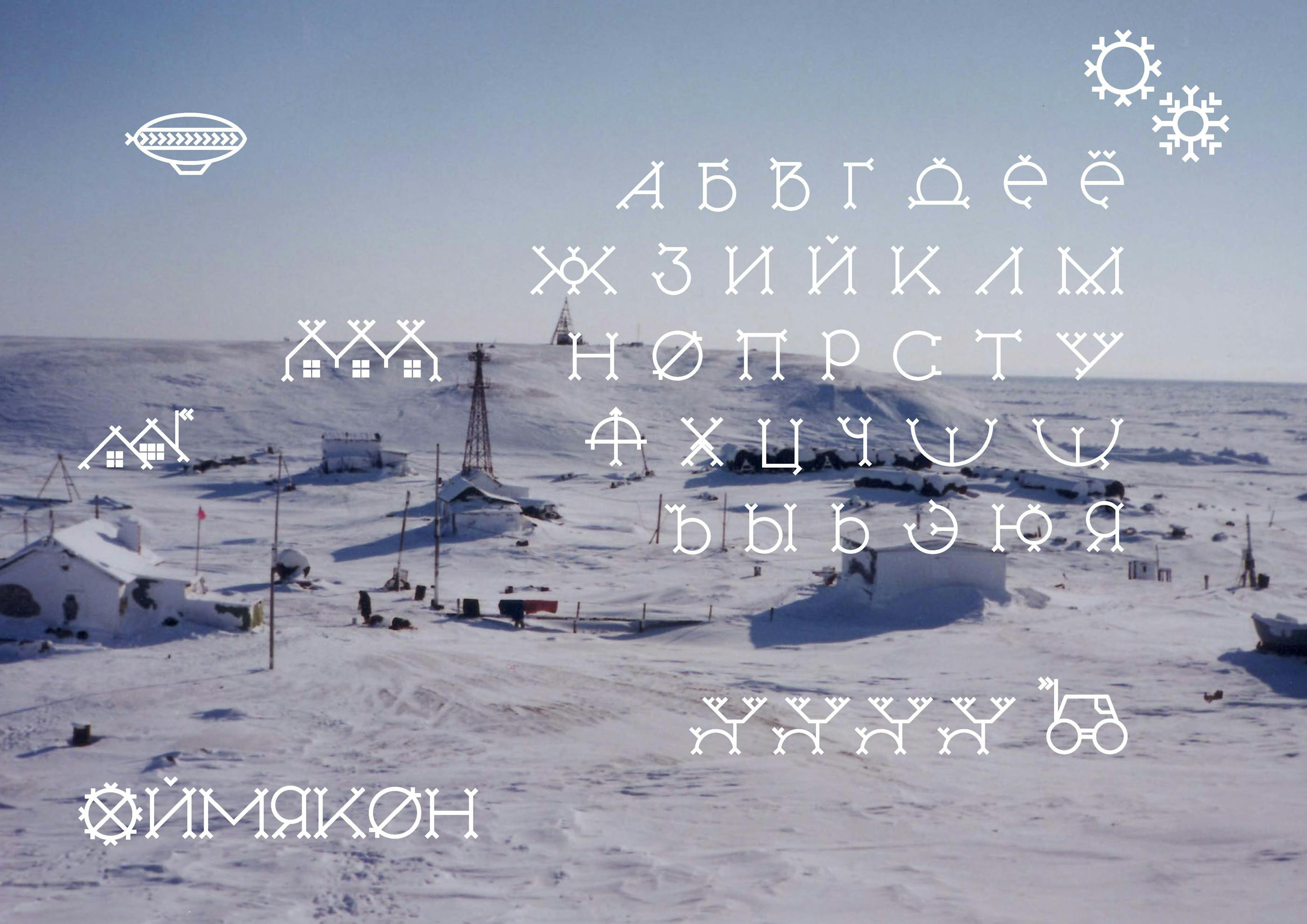OYMYAKON : : MODERNITY POLE
Open International Competition for a Concept of a Tourist Cluster.
🏆 second prize.
Oymyakon rural locality, Sakha Republic (Yakutia), Russia
- client: strategic development agency CENTER
- partner: MLA+ SPb, TC-Center, PROMCODE
2019, Concept
presentaion
defense held on August 30, 2019, in Yakutsk
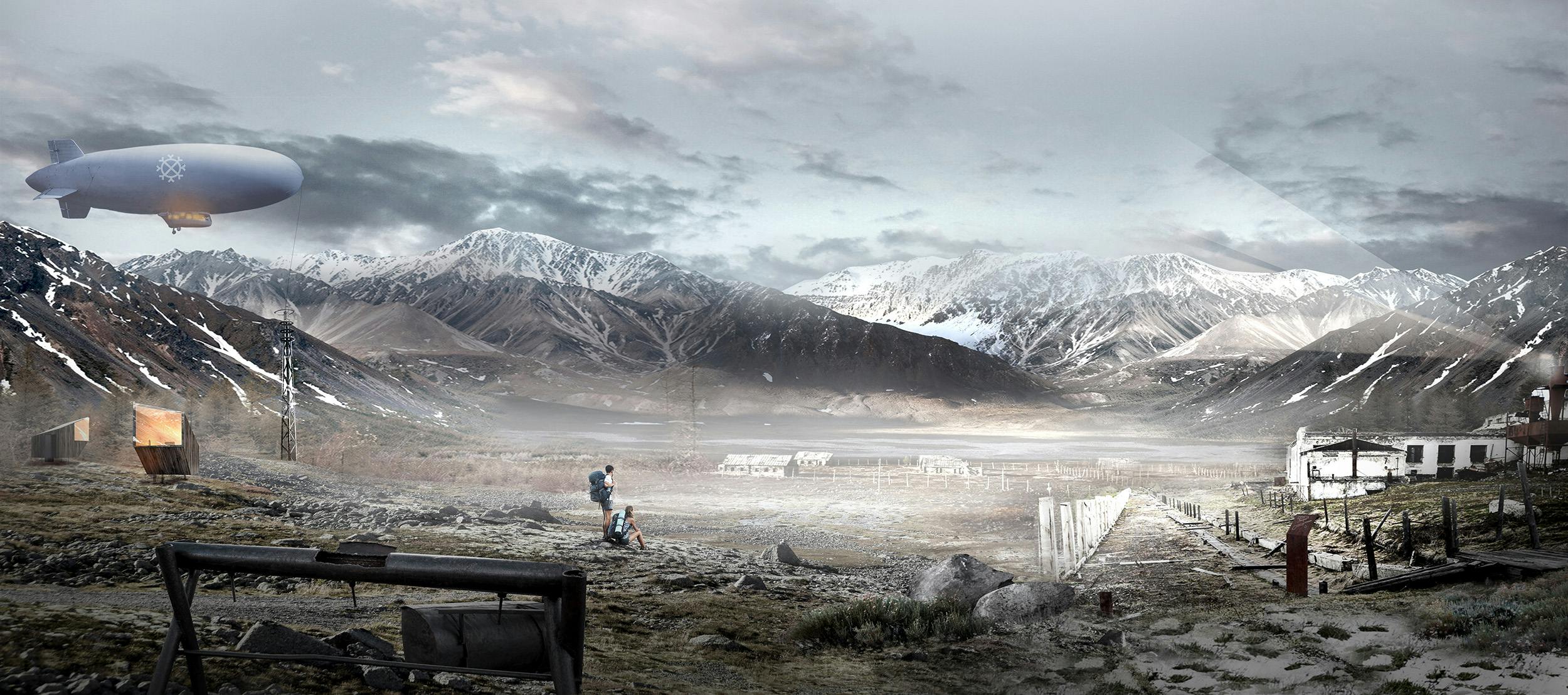
Oymyakon is an internationally recognized place. The aim of the project is to monetize its fame by developing an infrastructure for tourists. It is important not only to preserve, but to reproduce the territories’ values.
VALUES
- No manufacturing industry. Oymyakon district has never had large manufacturing sights, so the anthropo-load is currently minimal, and natural ecologies are preserved in their pristine state.
- Most and -est. Oymyakon is one of the coldest places on Earth. It shares this title with Vostok Station in Antarctica and Station Nord in Greenland. The coldest populated area on Earth is Oymyakon. The coldest lake — Labynkyr. The biggest aufeis — Bolshaya Momskaya.
- demostand for global climate change. Global climate change has a clear and visible impact on the state of ecological systems. This change is even more obvious in Oymyakon since its nature is almost untouched by people.
- adjustment of style and approach to life. Severe environmental conditions significantly influence lifestyle. In order to adjust to them, Oymyakon residents use both traditional and modern approaches, materials, resources, and have quite a specific schedule. This is an inevitable social and cultural process.
- roots of modernity. Across the project’s territory, there are scattered pieces of previous generations: Gulag, gold mining, abandoned cities. Currently there live people who are obviously modern to our times, but is seems as if they come from different eras of the past, which reminds of the traditional way of living, subsistence farming and agriculture, Soviet-like and post-Soviet settlements, maintenance of modern infrastructures. A tour can offer a comprehensive picture of the territory’s modernity, provide every detail of the past.
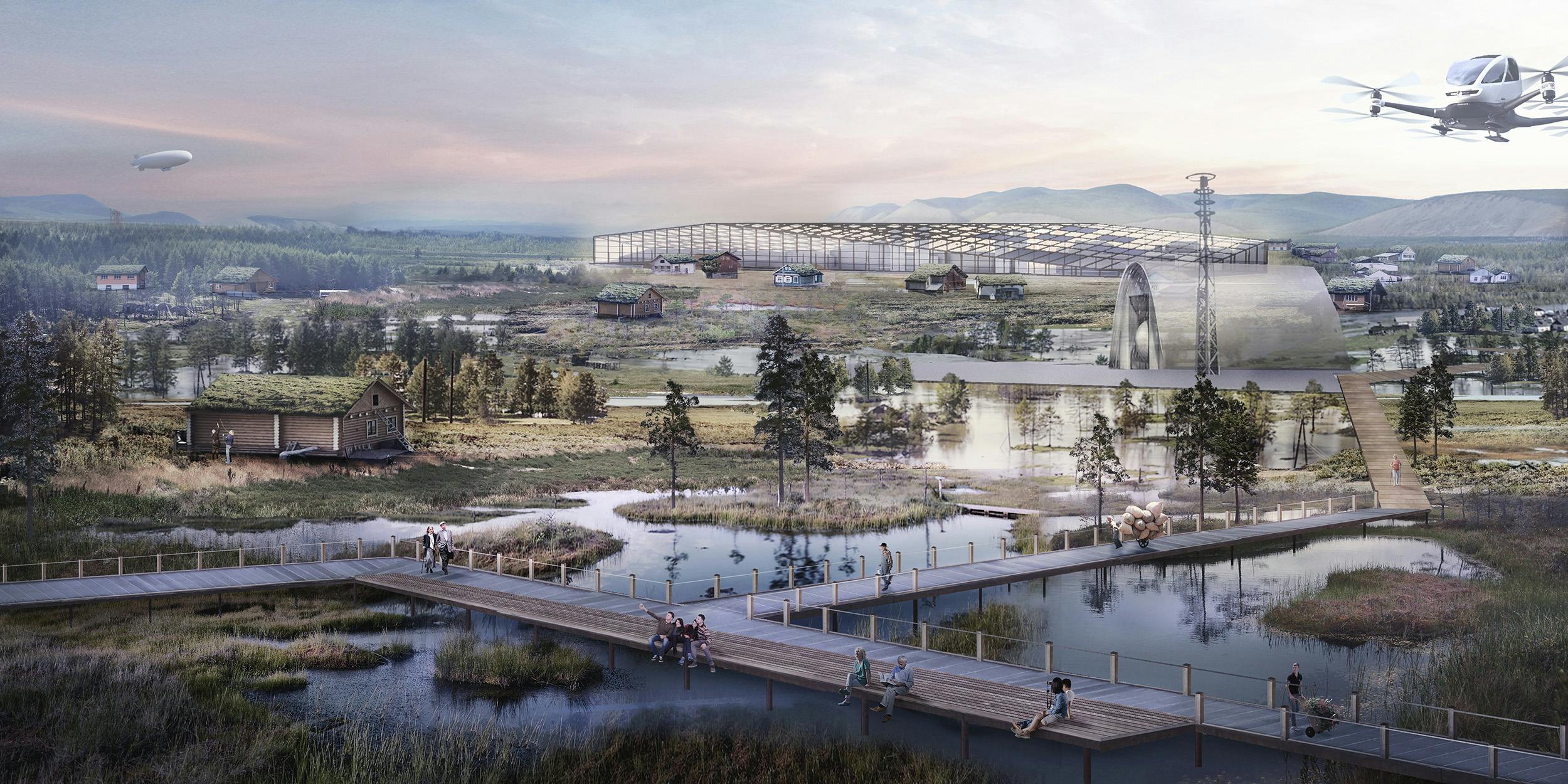
DISCLOSURE STATEMENT
- tourism is a tool, not an objective The target scenario sets certain requirements for the design of guest and tourist infrastructure. The design, in its turn, answers the question “How should we develop tourism on this exact territory with this exact development perspective in mind?”
- safety > accessibility > schedulability Complete safety has to be a key asset of the end solution. Without it, everything else will not work. Complete safety on the territory of Oymyakon is built on the principle of connection. There is a network of shelters of different volume. The target-oriented scenario aims to develop unmanned supply. Some of the suggested solutions are quite unconventional, which is, however, necessary in Oymyakon’s extreme conditions. For passenger transportation on the initial phase, we offer to use permanent pontoon parks in the zones of flooding. The target-oriented scenario presupposes that supply is mostly performed by on-land and air drones, which lowers risks in cases of extreme conditions. Increase of accessibility and its quality increases both safety and schedulability of routes. As a result, there is great coordination of all components of the guest infrastructure network.
- decarbonization+ The region’s ecosystem in general and permafrost in particular is very sensitive to global climate change, which is the result of an anthropogenic impact. We offer the following alternatives: the MHM Massiv-Holz-Mauer technology, carbonized wood, ethylene tetrafluoroethylene (ETFE) film, COR-TEN weathering steel, turf roofs.
- autonomization+ Solutions for autonomous supply, re-use and sustainability of resources allow to make sure there is discreetness both of settlements and a supply system. They also allow to develop new projects and initiatives in new places on the territory.
- radical >> shift Radical environment calls for radical solutions. In Oymyakon, the solutions that are usually not used for ordinary tasks perform the necessary functions more effectively and cost-efficiently.
- the area to test technological and social innovations Oymyakon is great not only for testing innovative technologies and solutions in extreme conditions, but also for studying social aspects of using these innovations.
- life infrastructure > guest infrastructure > creative infrastructure Systemic ecological approach means that everything — accessibility, convenience of infrastructure, safety, availability of resources — is created for Oymyakon residents in the first place, but also bearing in mind that it should always be available to tourists. Such approach improves the quality of landscape.
- to cross Oymyakon This motto creates a reference to the set phrase “to cross the Rubicon.” The project in itself calls Oymyakon residents, tourists, researchers, innovators, and authorities to make a decisive step towards the future they all wish for.
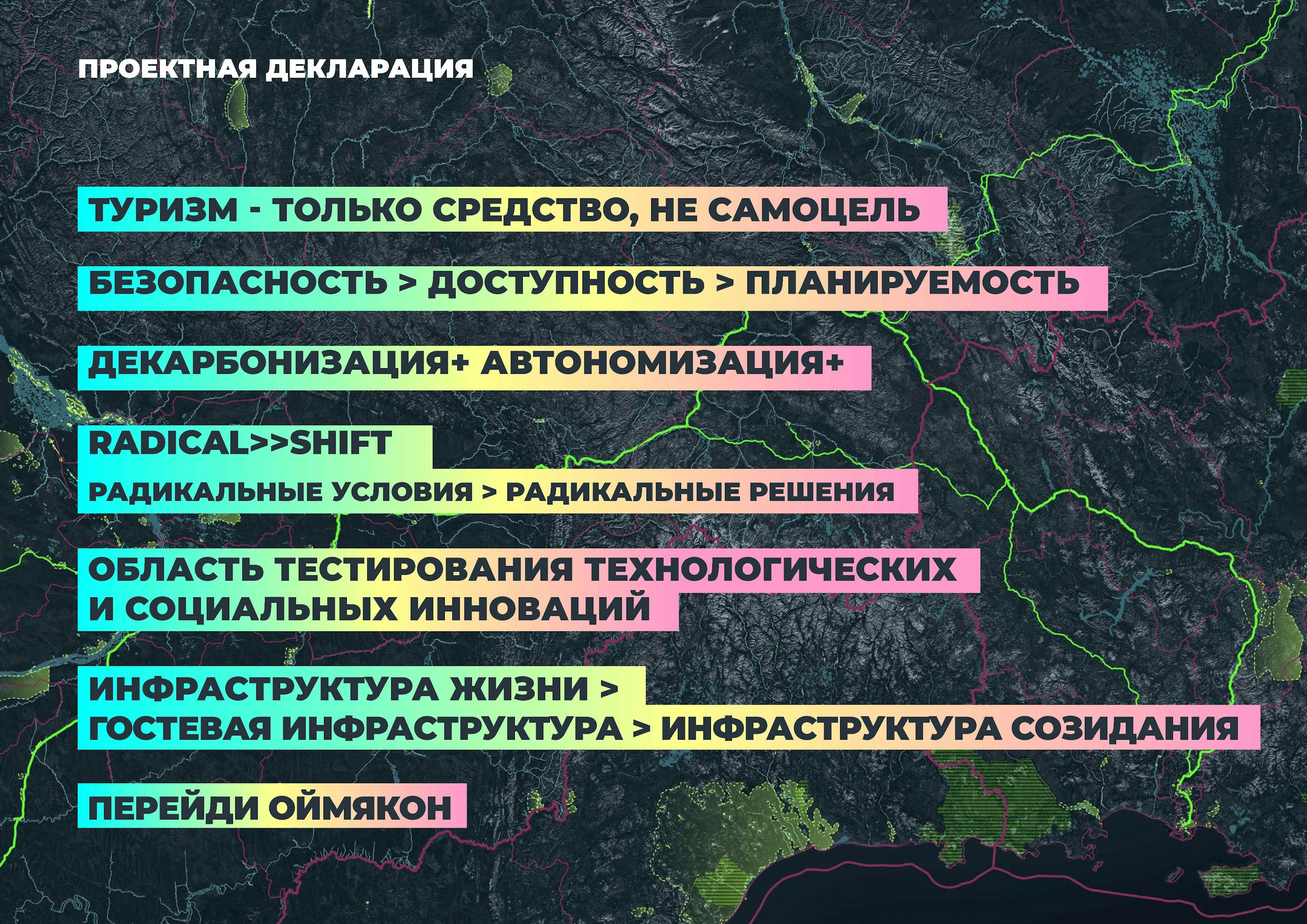
STRATEGY
KEY AUDIENCES
In order to reveal key audiences, points of attraction, and routes, we developed the POI analysis interface. We discovered that it is necessary to strengthen the groups, limit mass tourism, and attract new, better kind of researchers.
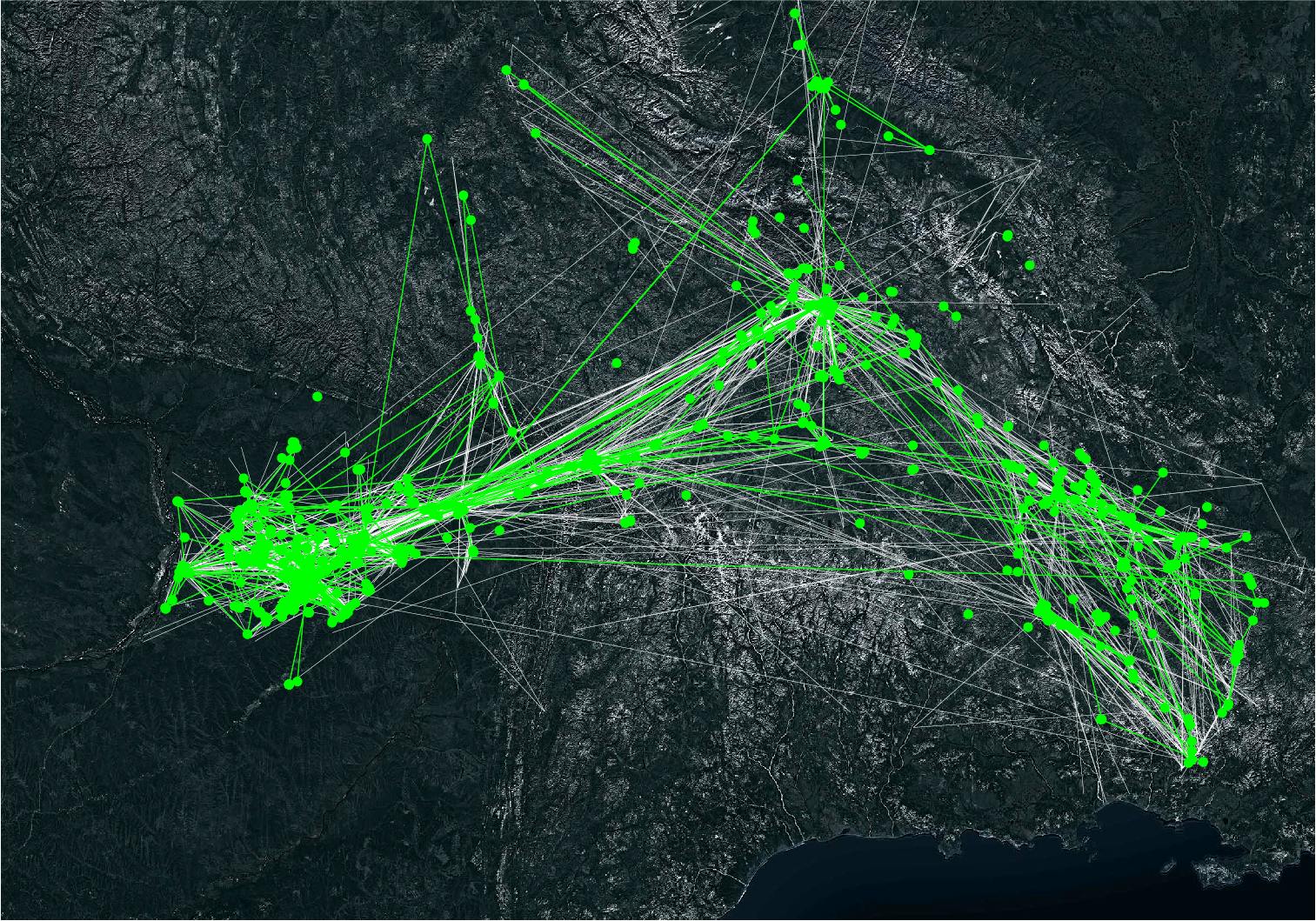
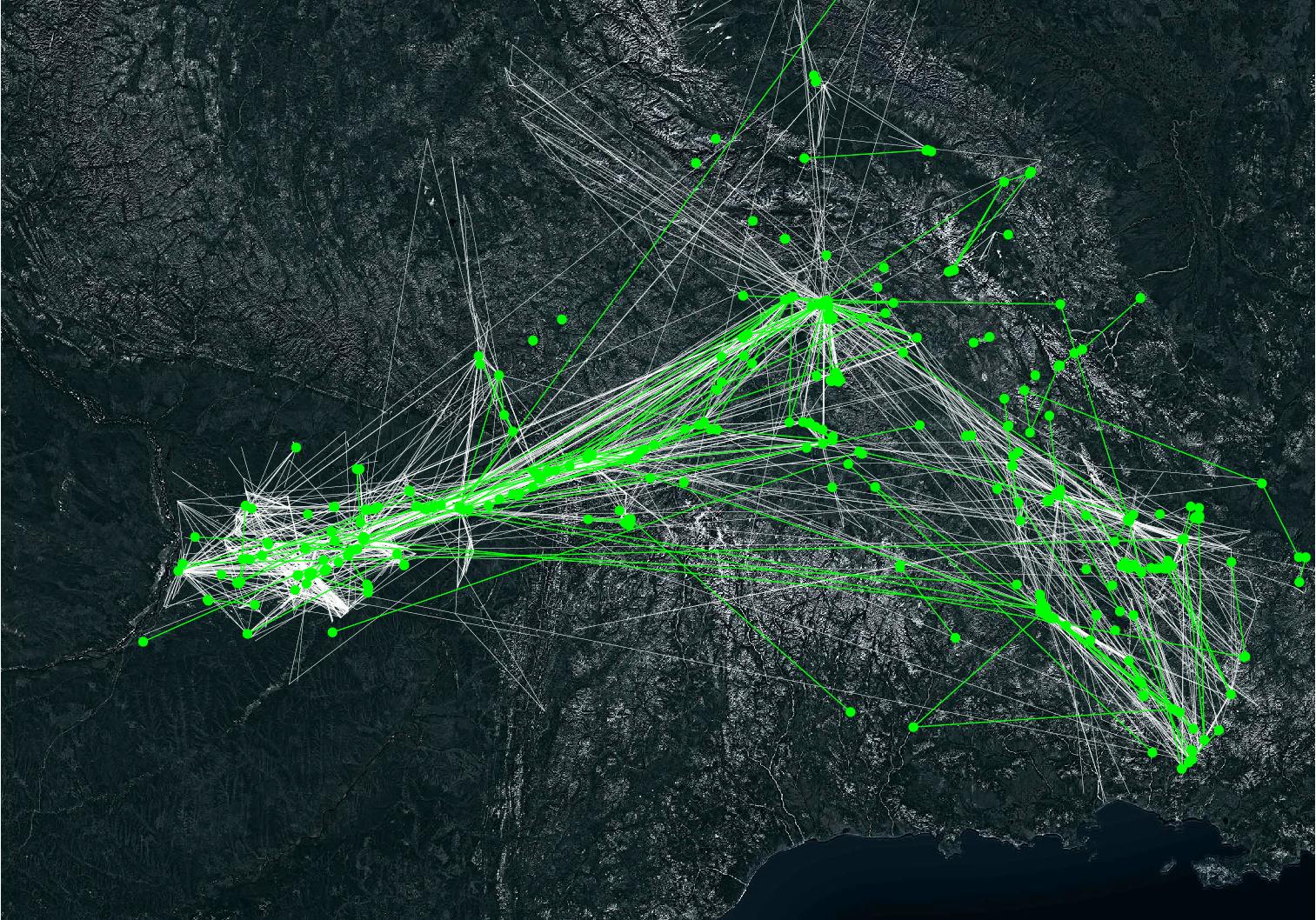
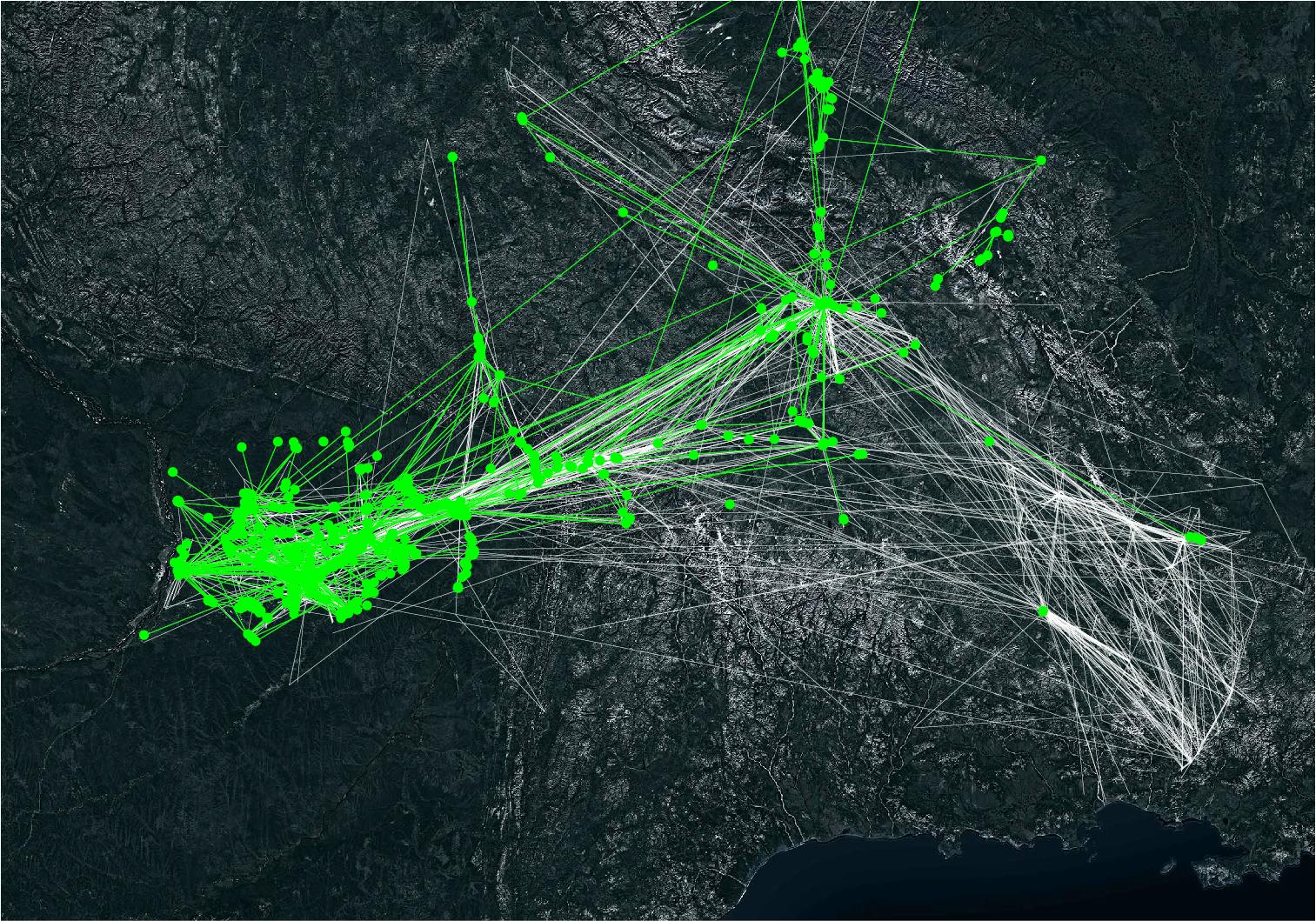
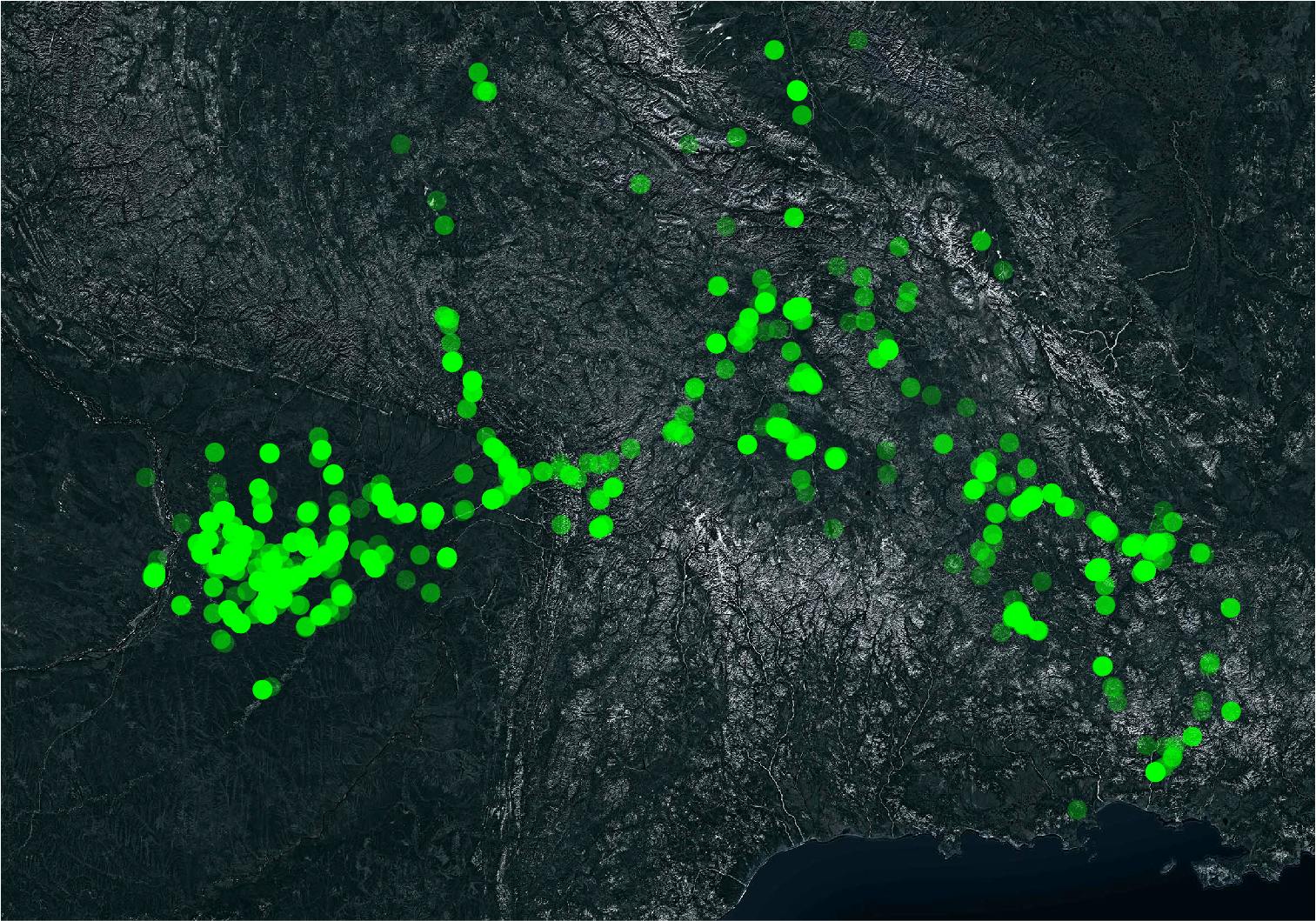
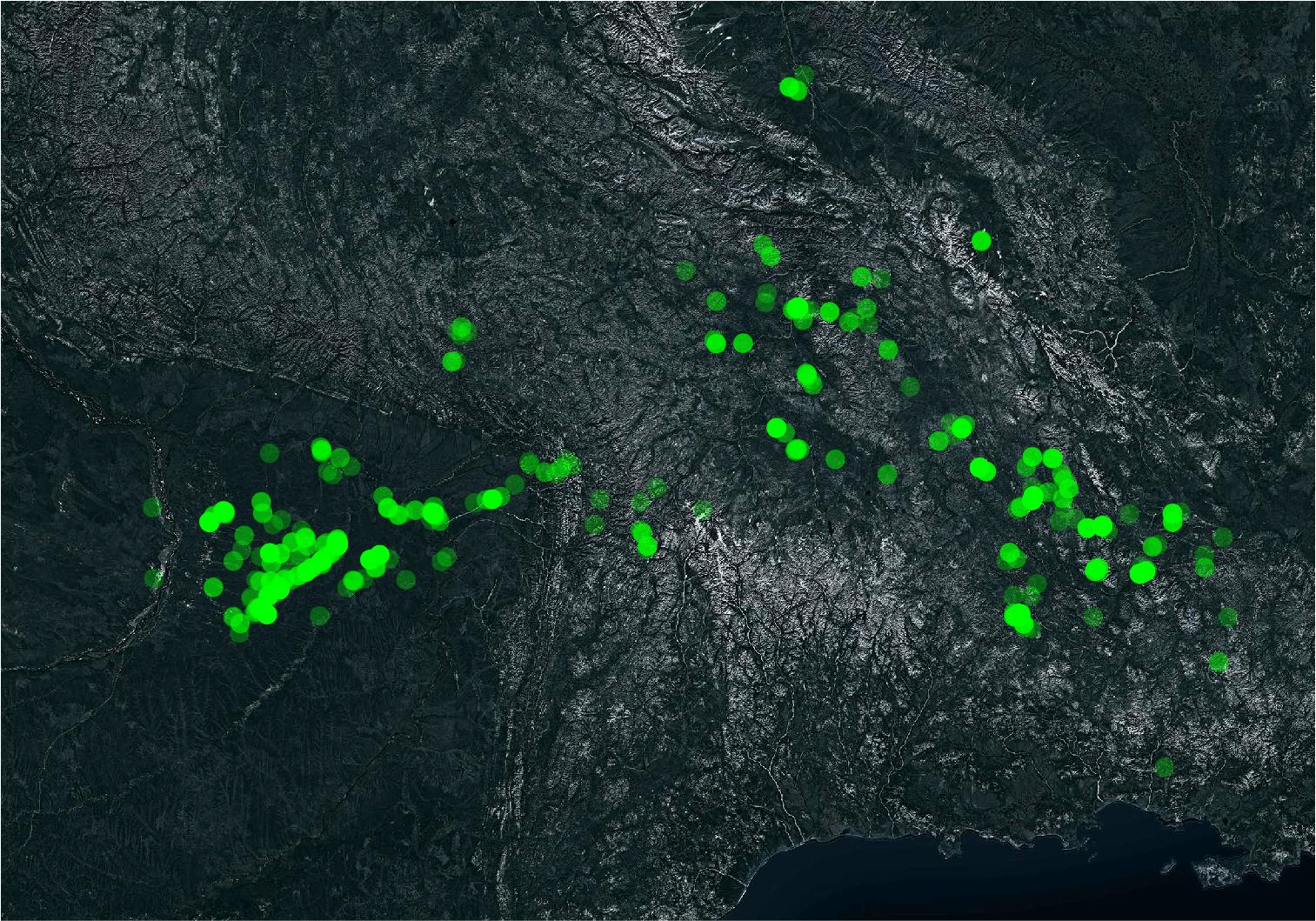
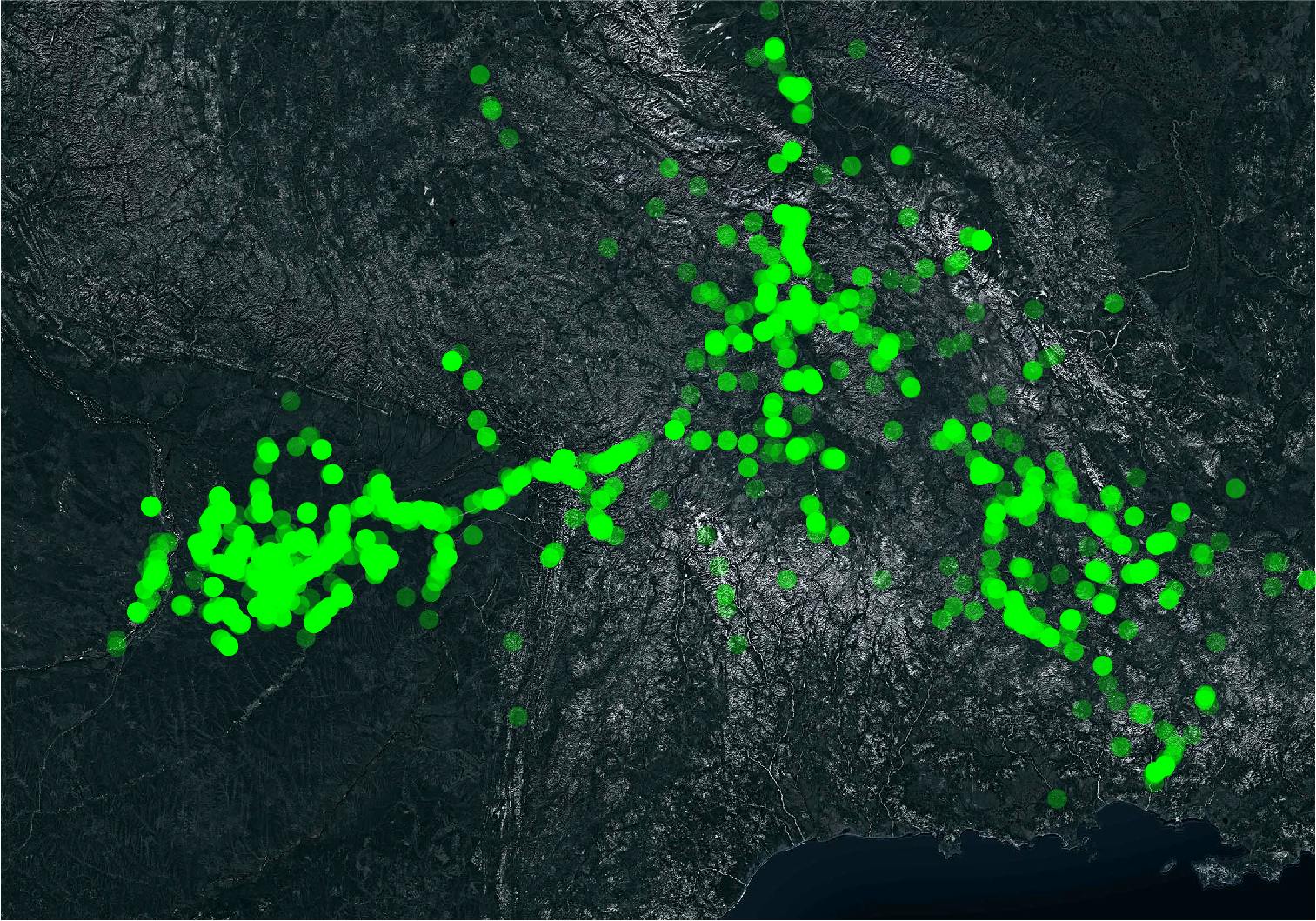
- lux-tourist An additional product of the project is a global-scale tour through the most exceptional places of the Russian North.
- small organized groups of solvent tourists Safety and accessibility will make it possible for tourists to plan their stay at the territory of Oymyakon individually and remotely.
- mass tourist Oymyakon’s capacity for mass tourists has to be artificially limited in order to avoid excessive anthropogenic load on the things highlighted in the Values section.
- nomads Nothing special is designed for this category. They are expected to be using all the same things that are created for the other ones.
- researchers The smallest category, which, however, creates a conceptually new economics of the sphere and the region. This category is very solvent. With this category come long-term tours and expeditions, and people are staying longer.
THEMATIC SCENARIOS
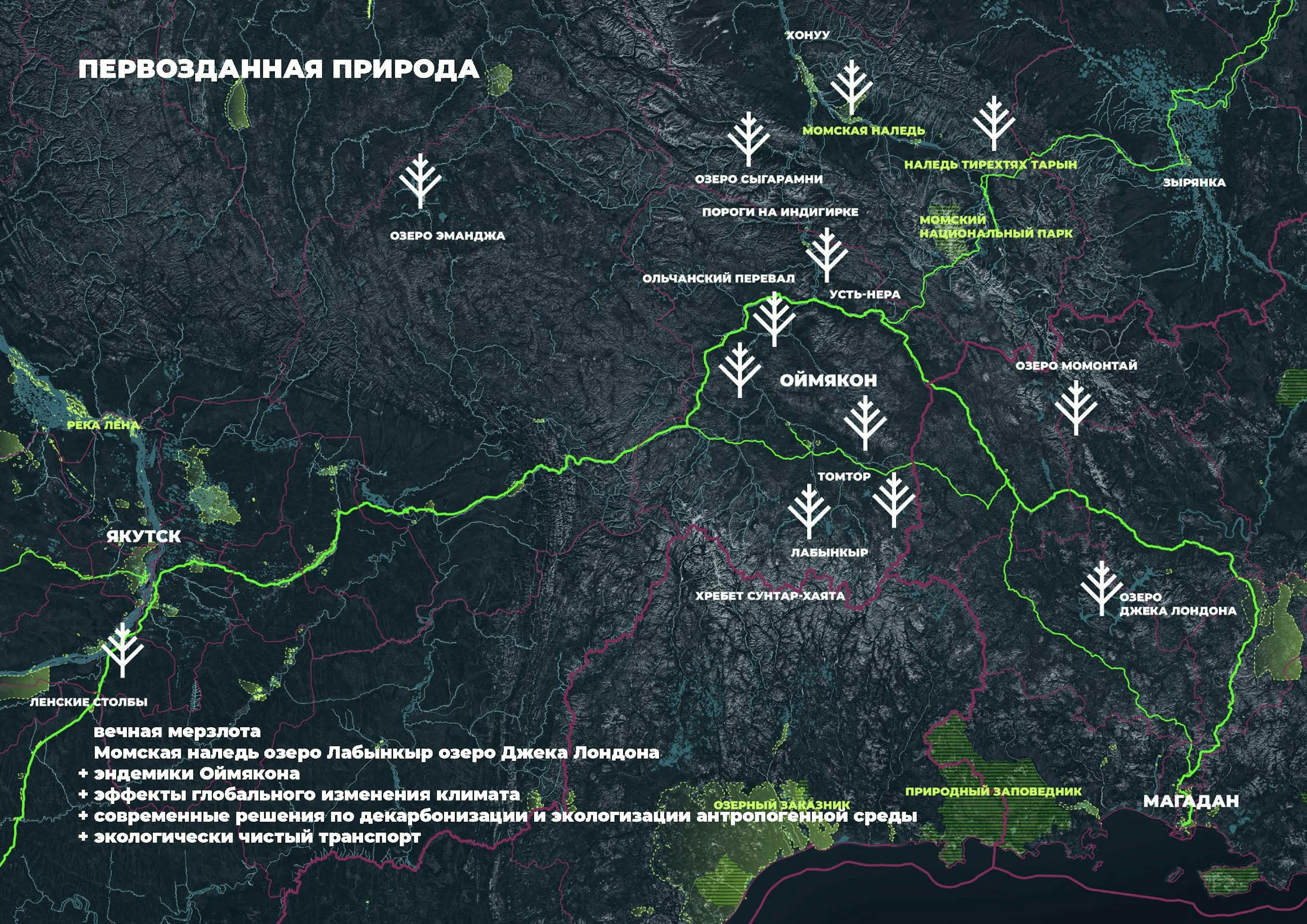
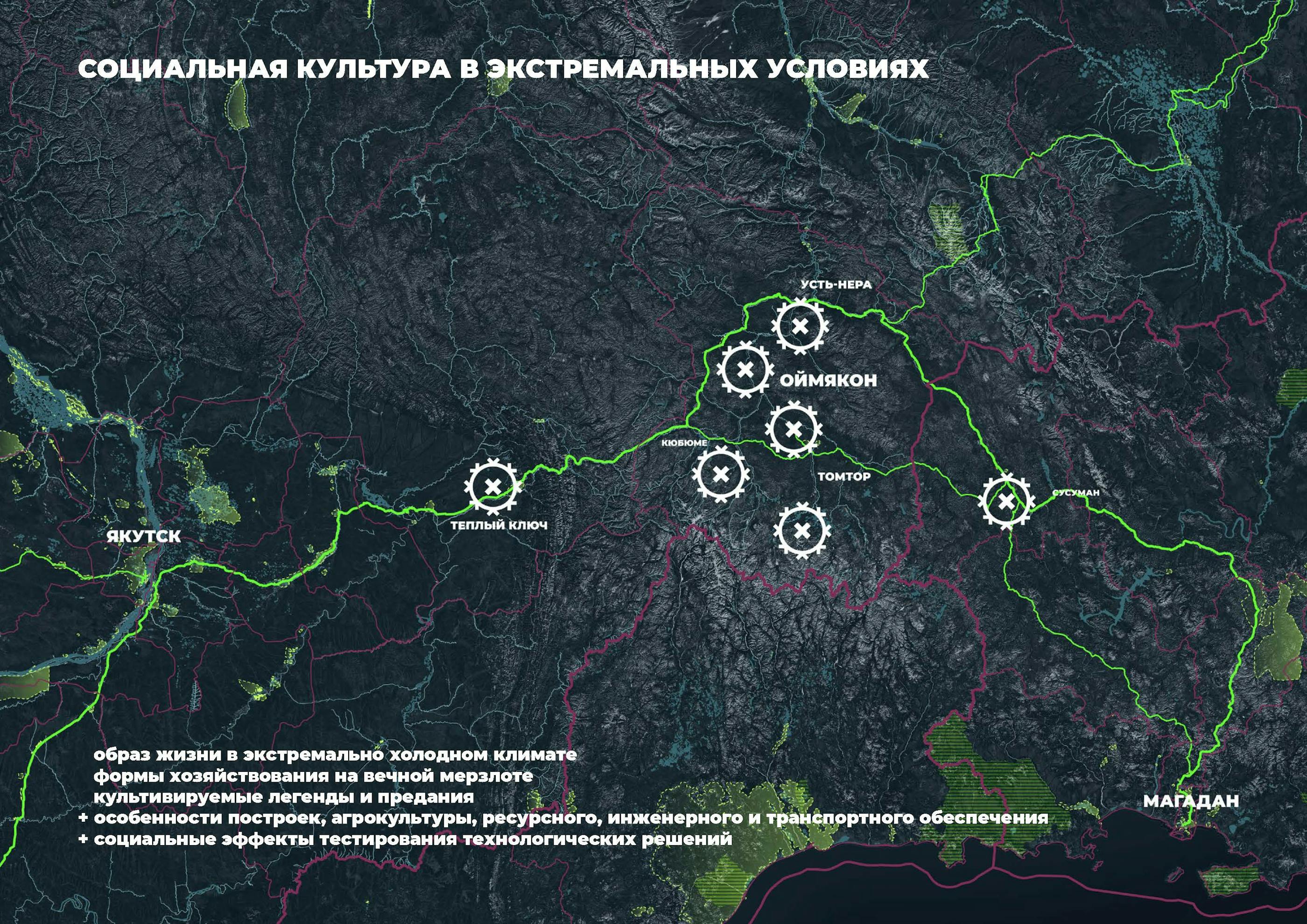
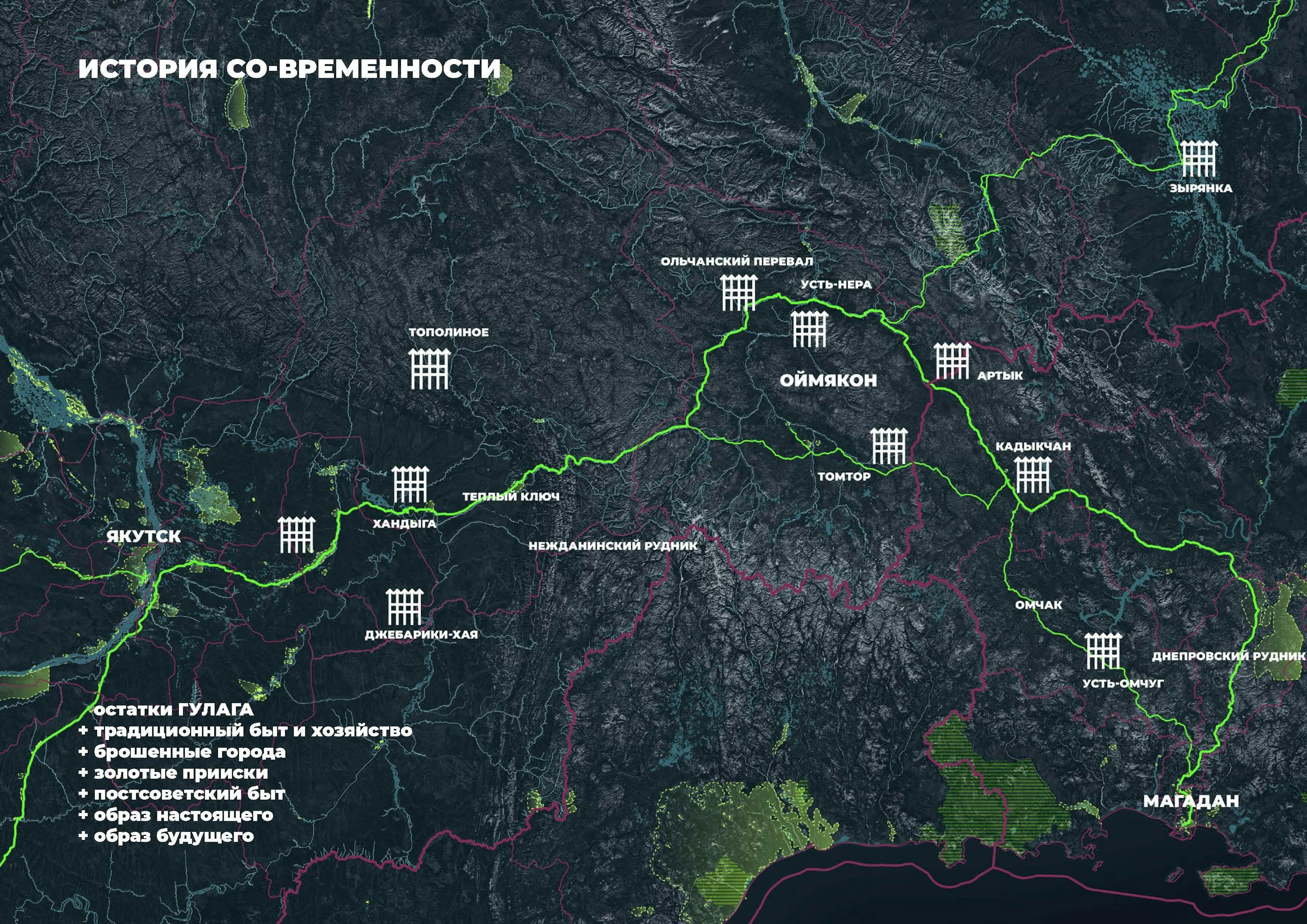
- pristine nature Permafrost, Oymyakon’s endemic species, effects of global climate change, Momskaya aufeis, Labynkyr lake, Jack London Lake, national parks, equestrian tours, landscape hotels, glampings, modern solutions for decarbonization and autonomization of anthropogenic environment, pollution-free transport.
- social culture in extreme conditions Lifestyle in conditions of extreme cold; forms of activity on permafrost: specificities of architecture, agriculture, supply of resources, engineering and transport solutions; the legends and tales that are passed down and cultivated from generation to generation; social effects of testing new technologies.
- roots of modernity Traditional culture; traditional industries and activities, such as deer breeding and horse breeding; work with what remains from the Gulag and the abandoned towns (Kadykchan); gold mining (Drazhnoe); post-Soviet culture; image of the present, image of the future.
SCALEDOWN
Consideration given to the planning of the project on multiple scales is a key to sustainability of solutions.
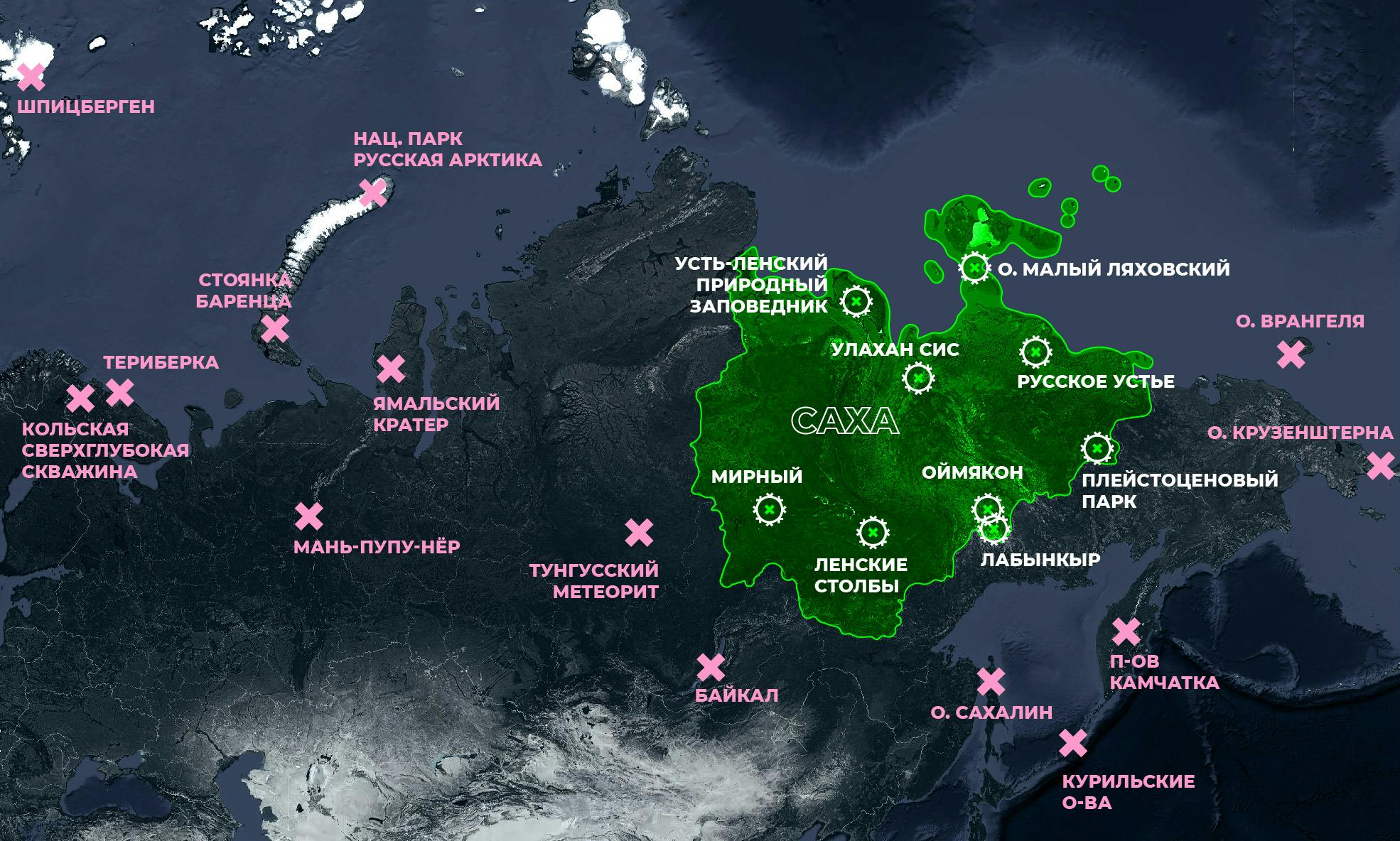
- Russian North Russian North puts Oymyakon (as the coldest populated area on Earth) and Labynkyr (as the coldest lake on Earth) on global display in one row with some of the world’s most valuable artefacts and natural phenomena: Spitsbergen island and Pyramiden settlement, the Kola Superdeep Borehole, Teriberka rural locality, the Manpupuner rock formations, Barentsz’s camp, the Yamal crater, the site of the Tunguska event, Lena Delta, Russkoye Ustye rural locality, Valley of Geysers on Kamchatka Peninsula, "Mir" underground diamond mine, Pleistocene Park, Wrangel Island, Little Diomede Island, Lena Pillars.
- cross-regional scale Some of the project’s components are found in Yakutsk and Magadan as these cities are the points, from which Oymyakon area can be accessed. There the infocenters and branded infoboxes (for instance, in key hotels and airports) should be located. They would inform visitors about Oymyakon.
- Oymyakon area The borders of the area covered by the project lay a bit further than the Oymyakon area proper. The project’s area lays from Khandyga rural locality in the west to Jack London Lake in the east, from Labynkyr in the south to Khonuu rural locality in the north.
- global scale There were developed organizational means of attracting academic tours to the project and providing grounds for technological corporations to be interested in testing their technological solutions in extreme conditions.
SCENARIOS
The choice of a strategic development scenario depends, in fact, on what type of an administrative subject —an ulus (a relatively small settlement) or a region — takes up the role of a leader of change.
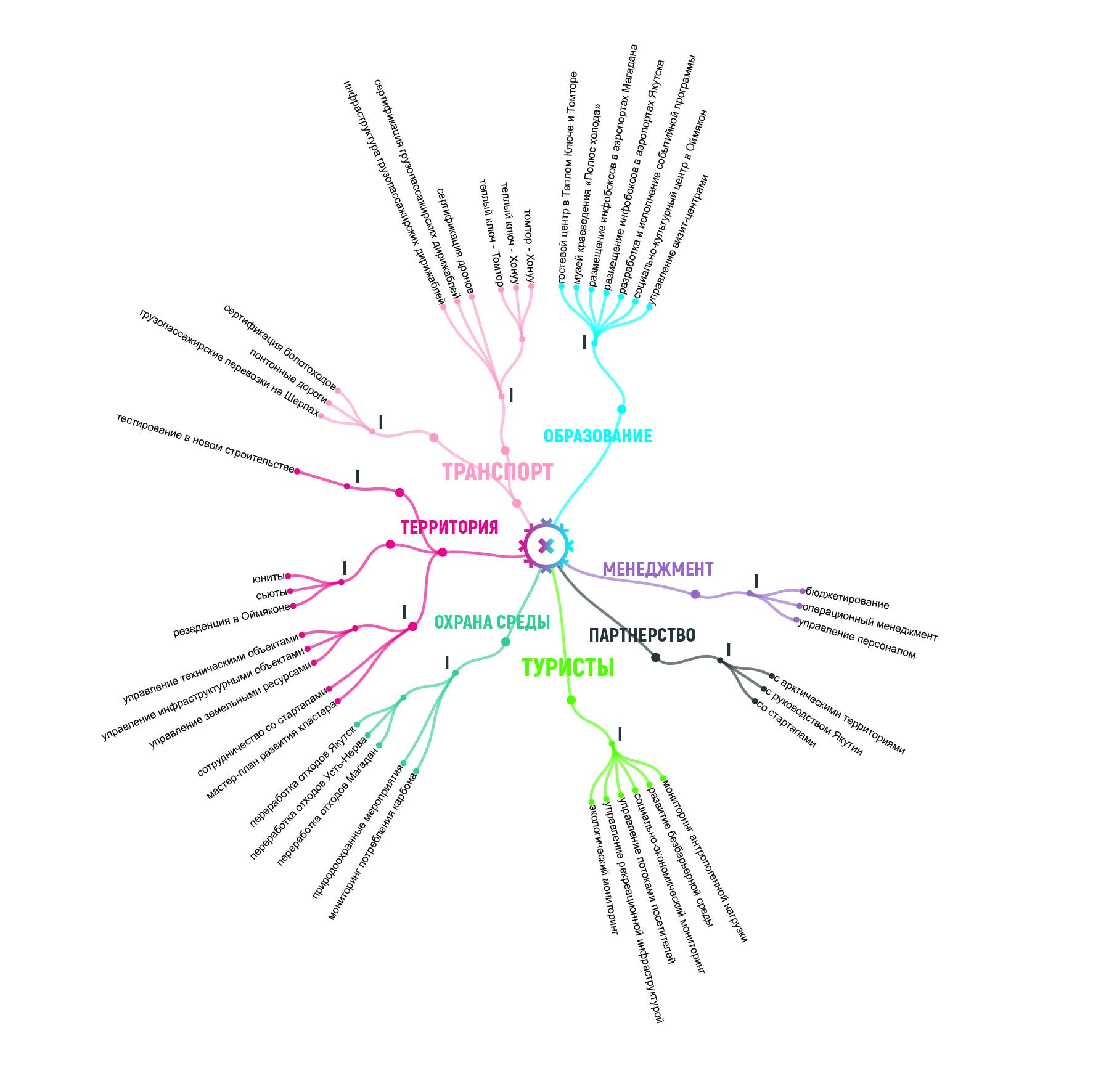
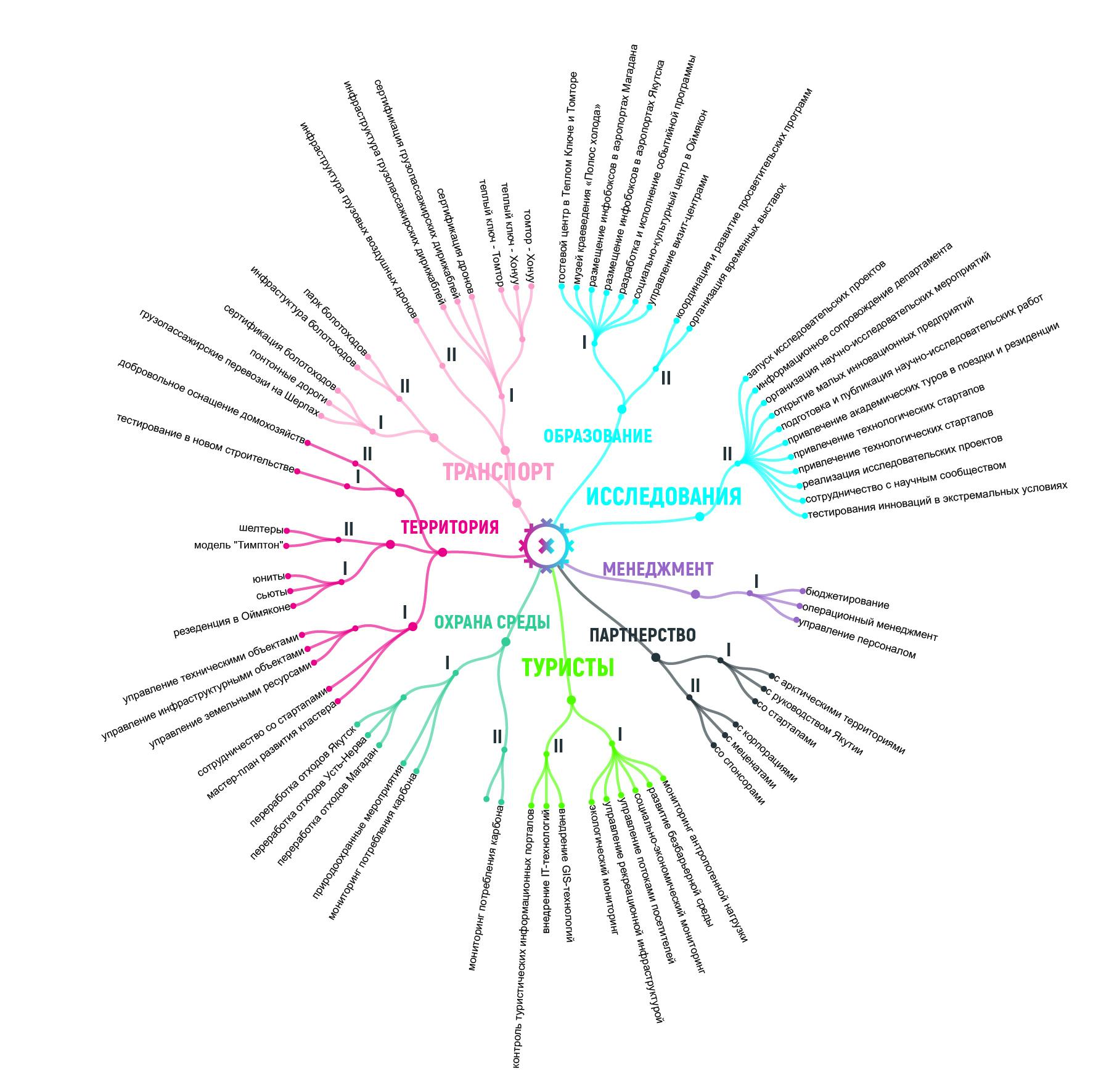
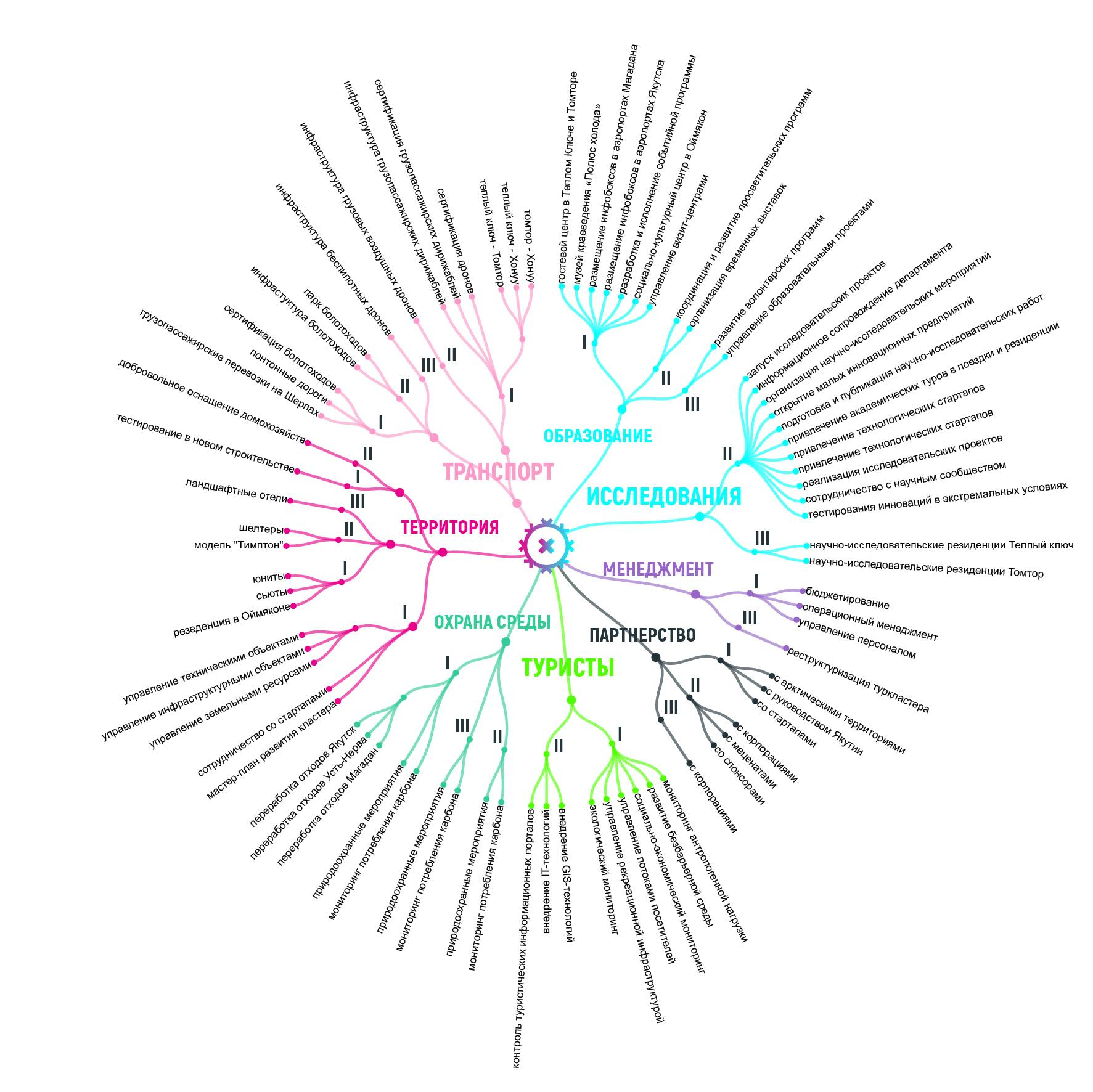
- weak scenario In a way, this scenario is a traditional one since it presupposes addressing an already existing demand in a number of segments by involving already existing local forces and subjects. In this case, there is developed a working group of representatives of local authorities and regional tour operators.
- strong scenario If this scenario is at play, the project’s forces are allied not around creation of demand in the tourism sector, but to create a certain quality of environment which is developed for the locals but also attracts tourists due to a combination of safety, accessibility, and uniqueness. In this case, there should be created an office of professional managers from the region, representatives of the involved corporations, and a working group of representatives of local authorities and regional tour operators.
- target-oriented scenario A target-oriented scenario is meant to attract actors of different quality. This scenario drastically changes the economic landscape of the project: it turns from the environment of consumption to the environment of creation. Value, length, and economic feedback of tours grows, and there is no additional load on the infrastructure of safety and accessibility. There also appears a managing center in a complex for culture and science in Teply Klyuch.
PHASES
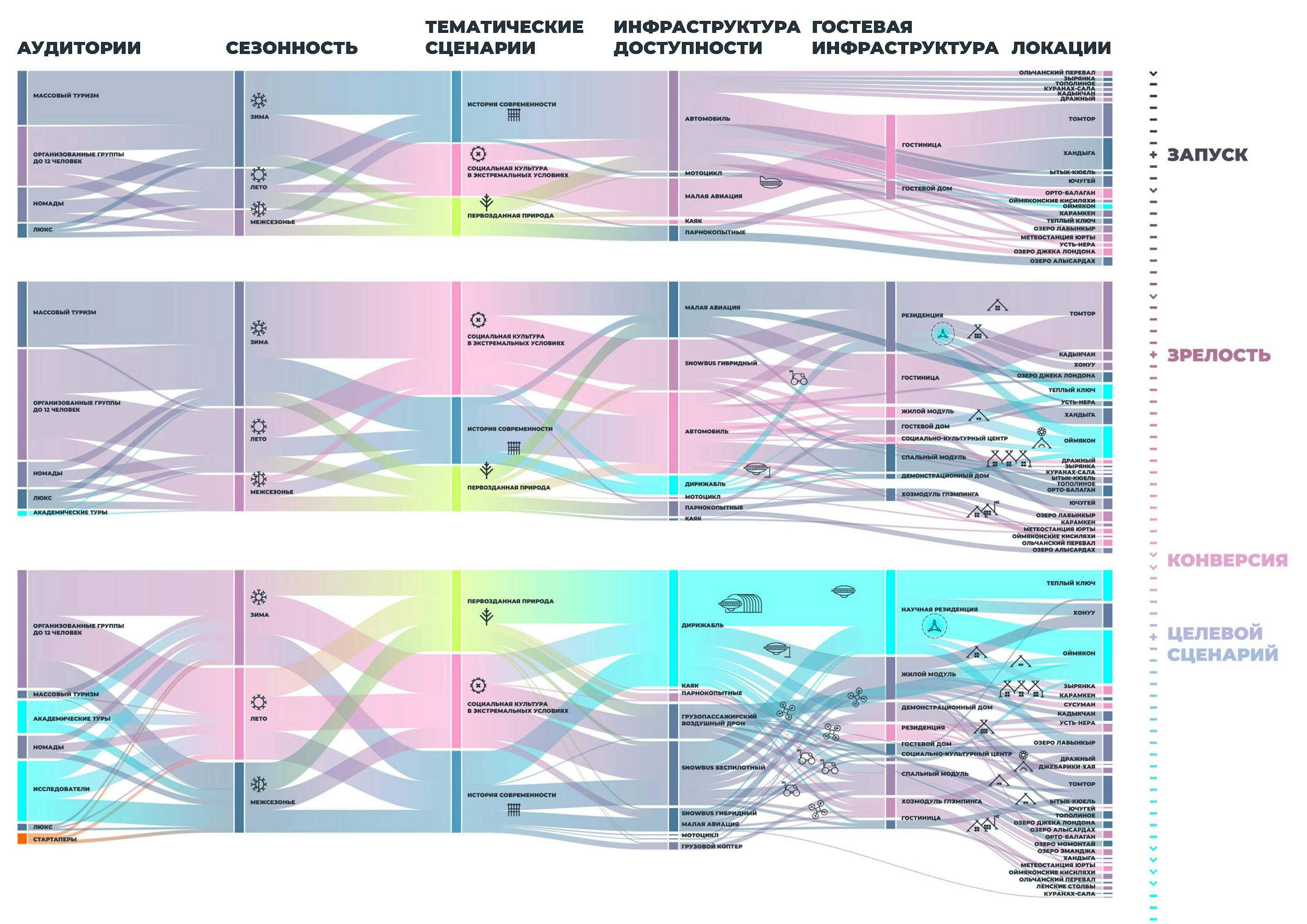
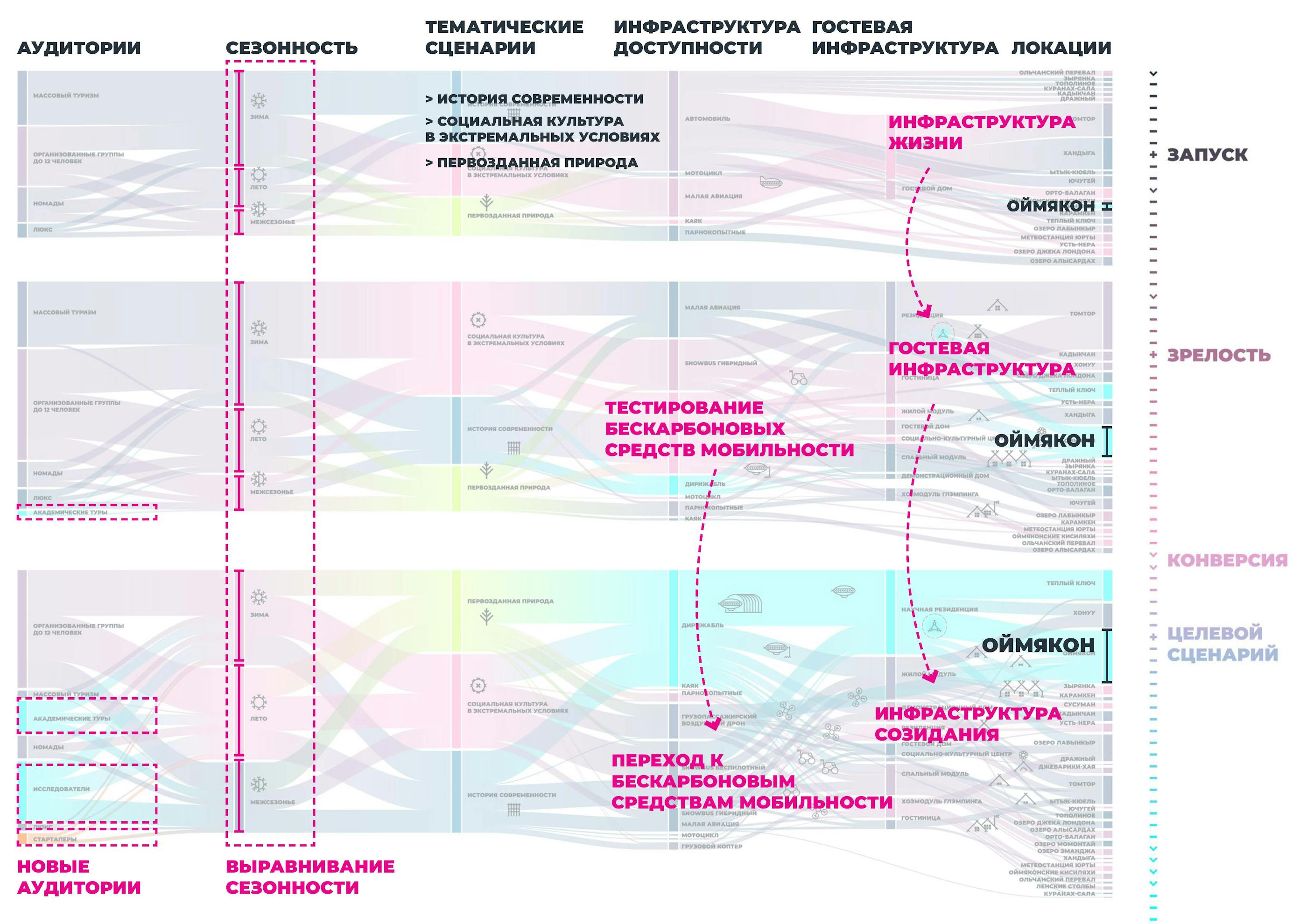
LAUNCH
The launch phase combines components of a weak scenario and some pieces of a strong scenario (without which neither a weak nor a target-oriented scenario can have any success). For this phase, it is important to reach better accessibility of the starting points of the net, to inform the newcomers, to place major types of objects of the net, and to launch certification of key components of the next phase. The phase of launch only indicates the beginning of changes, informs about their character and perspectives, explains what is done and why it is done.
MATURITY
This phase offers to implement components of a strong scenario and create foundation for the target-oriented scenario.
During this phase, it is important to broaden topology of the net and to provide diversity of the offered things. There must be developed a bigger and better net of available routes (and, subsequently, suites and residences), and there must be written their description. The most remote routes must be supported with shelters. There can also be offered several means of transportation. On this phase, selected routes of airships are tested for the purposes of public transportation and selected routes of air and on-land drones (snowbuses) are tested for supply purposes. There is also introduced a new kind of a sustainable and power-efficient residential development for rural localities — Timpton. Within the demo period, tourists and researchers will be able to rent this accommodation. Guest center Teply Klyuch launches the programs for attracting academic tours to trips and residencies, for testing technological innovations in extreme environment and attracting technological startups, for attracting social and ecological researchers, and also opens small innovation enterprises.
TARGET-ORIENTED SCENARIO
In this scenario, almost all guest centers function as research residencies. Main supply channel is executed by on-land and air drones. Urgent passenger transportation is performed by passenger air drones and electromotor light aviation. Regular scheduled passenger service is performed by airships and on-land passenger drones. Airships and on-land drones are also used for transporting goods, materials, and waste. Together with cargo air drones, on-land passenger drones with mobile suites are used for long-term guest trips and research expeditions.
Looking at the specifics of tourist infrastructure, we offer guests to use landscape hotels, suites, units and shelters, and camps. They can also rent camping and hiking gear, horses, and mobile suites. Other than all that, they can use civil infrastructure: access solutions, Timptons (sustainable and power-efficient residential development for rural localities). Researchers can also use different types of infrastructure: residencies, suites, shelters, airships, supply drones.
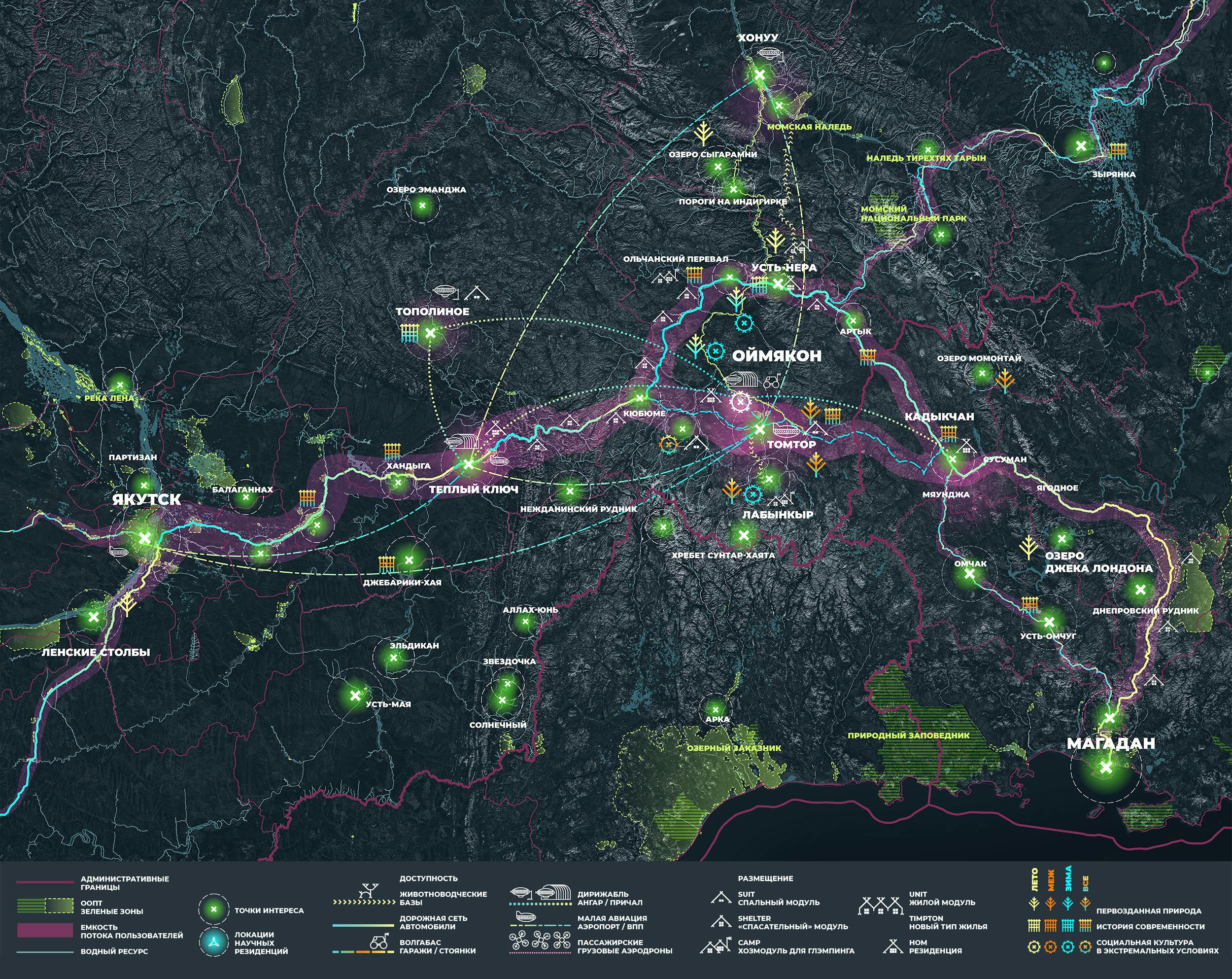
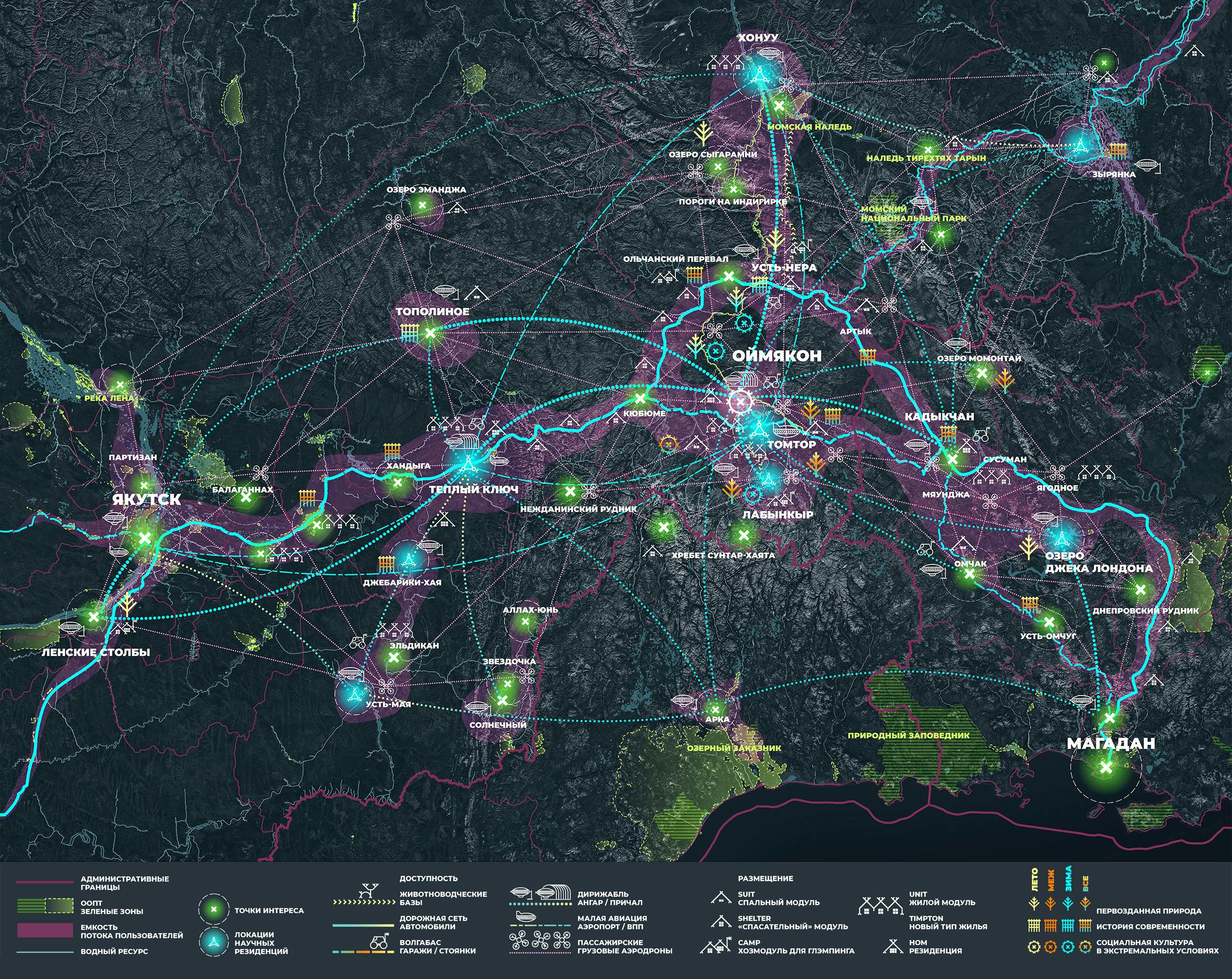
In this scenario, almost all guest centers function as research residencies: research is their main function, and servicing guests — secondary.
COMPONENTS OF SOLUTION
- passenger-and-cargo swamp buggies | on-land drones Following the ideas of the concept of accessibility, safety, and supply, the project offers to use products and solutions of a Russian company Volgabus. For the launch phase, we chose Sherp swamp buggies, and for later phases, in order to follow the concept of decarbonization — the unmanned swamp buggies built on the basis of Snowbuses with a body made of glued wood and with a diesel-electric hybrid engine. As an option for developing guest service further, we offer to introduce mobile self-run accommodation capsules which can travel to farther and less accessible places (when supported by cargo air drones).
- passenger-and-cargo airships Following the ideas of the concept of accessibility, safety, and supply, the project offers to use products and solutions of a Russian company RosAeroSystems/Augur (another option — products of a German company Zeppellin NT). Airships are intended to be used for scheduled passenger transportation, specialized thematic tourist trips across the most captivating landscapes and to farther lands, for transportation of goods, materials, and waste.
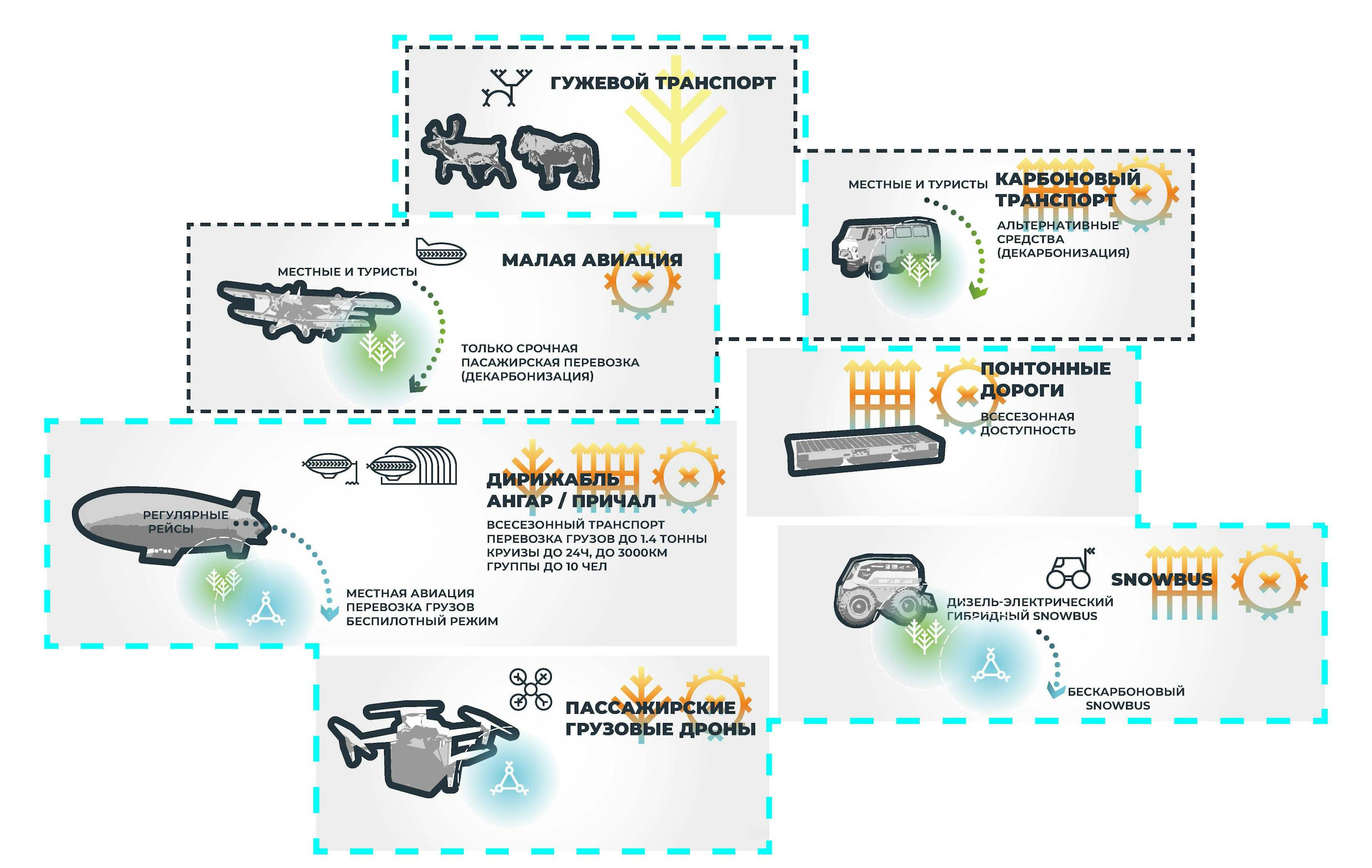
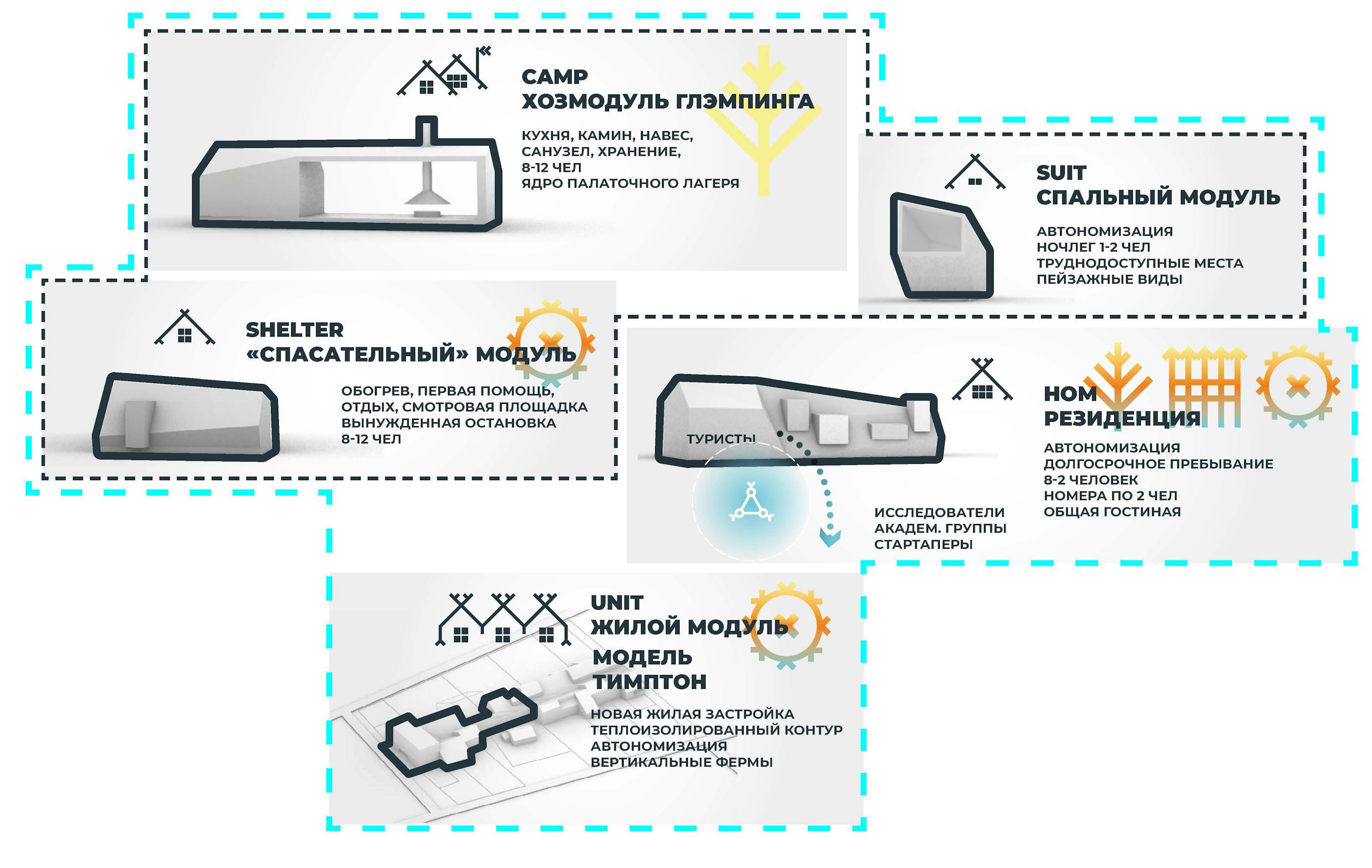
- suite Sleeping module for several people.
- shelter Rescue module along the Kolyma Highway and in points of interest that are distanced from mass routes.
- camp Living module for glamping.
- unit Minimal mobile guest block designed for no more than two people. Used as an auxiliary block for households that volunteer to have it installed. The block is assembled using the MHM Ноelz100 technology and covered with carbonized wood. It has a system of autonomous supply and circuits for re-using resources. Autonomization system is serviced by the provider and, from time to time, updated to a more modern version.
- residency Extended autonomous guest module with a common part. It has a kitchen, a living room, and several bedrooms with showers; used to provide for comfort of guests. It is assembled using the MHM Ноelz100 technology and covered with carbonized wood; has a system of autonomous supply and circuits for re-using resources. If necessary (for instance, in distanced and isolated places), the guest module can be accompanied with a housekeeping module (unit).
TIMPTON MODEL
A new kind of residential development for Oymyakon.
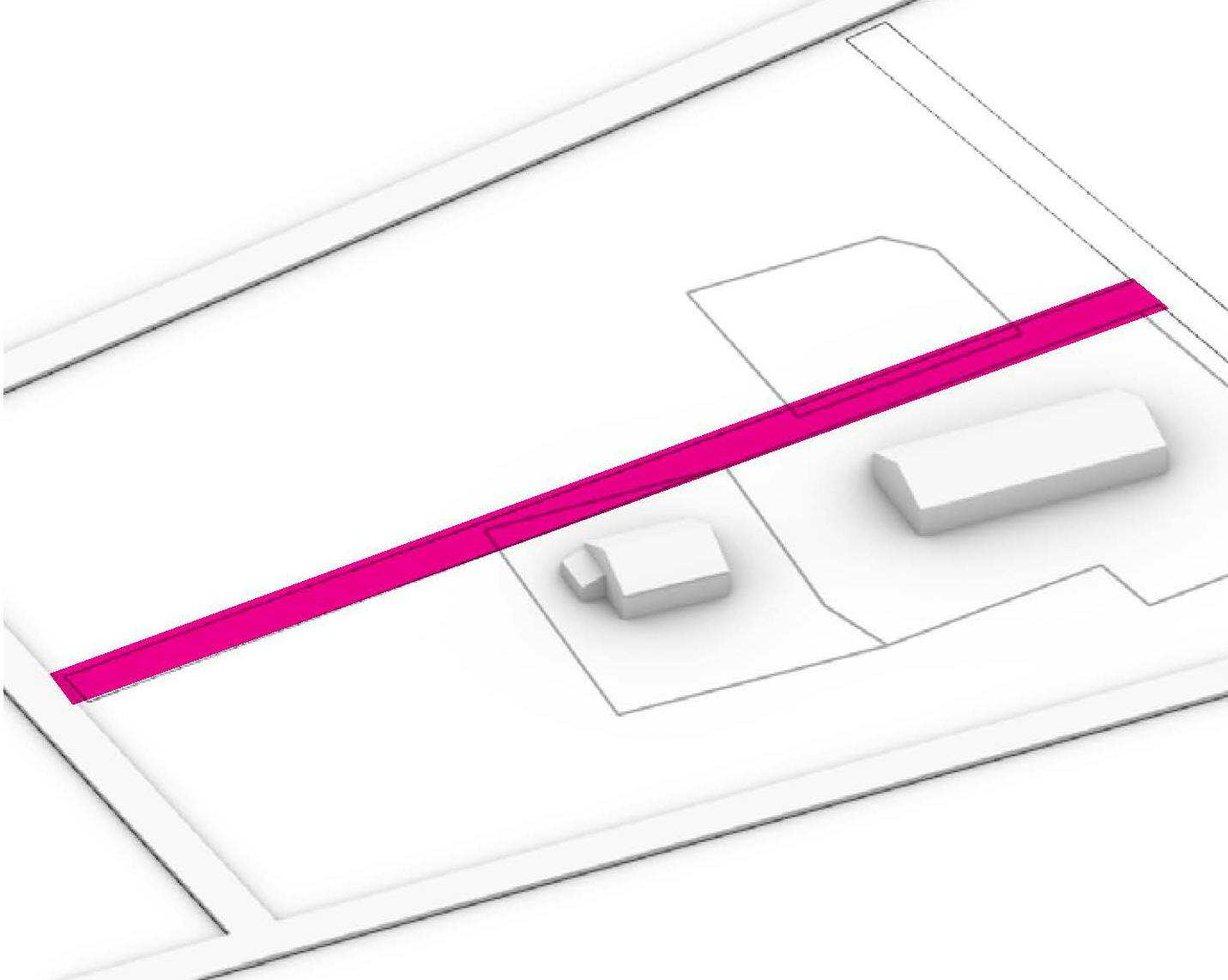
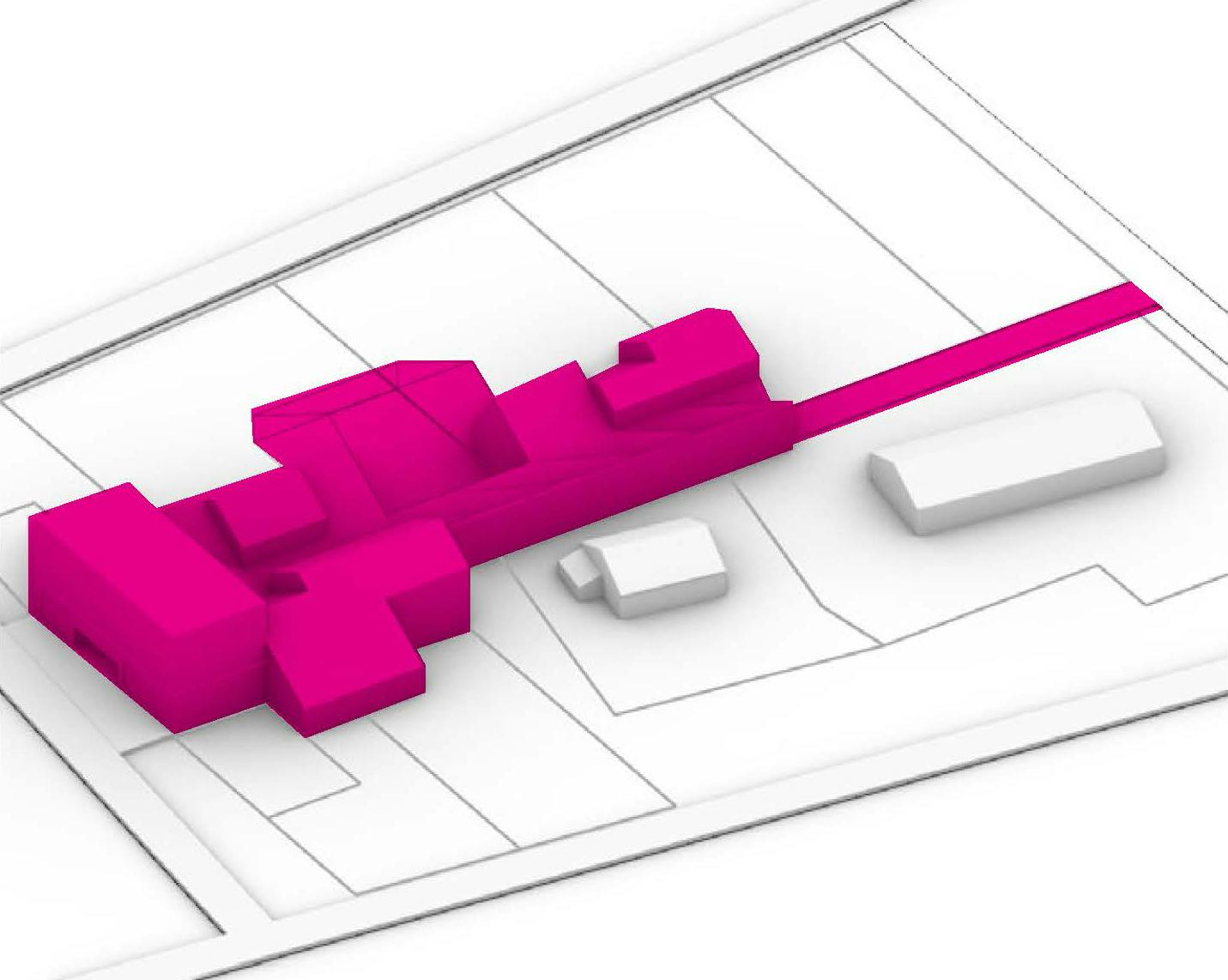
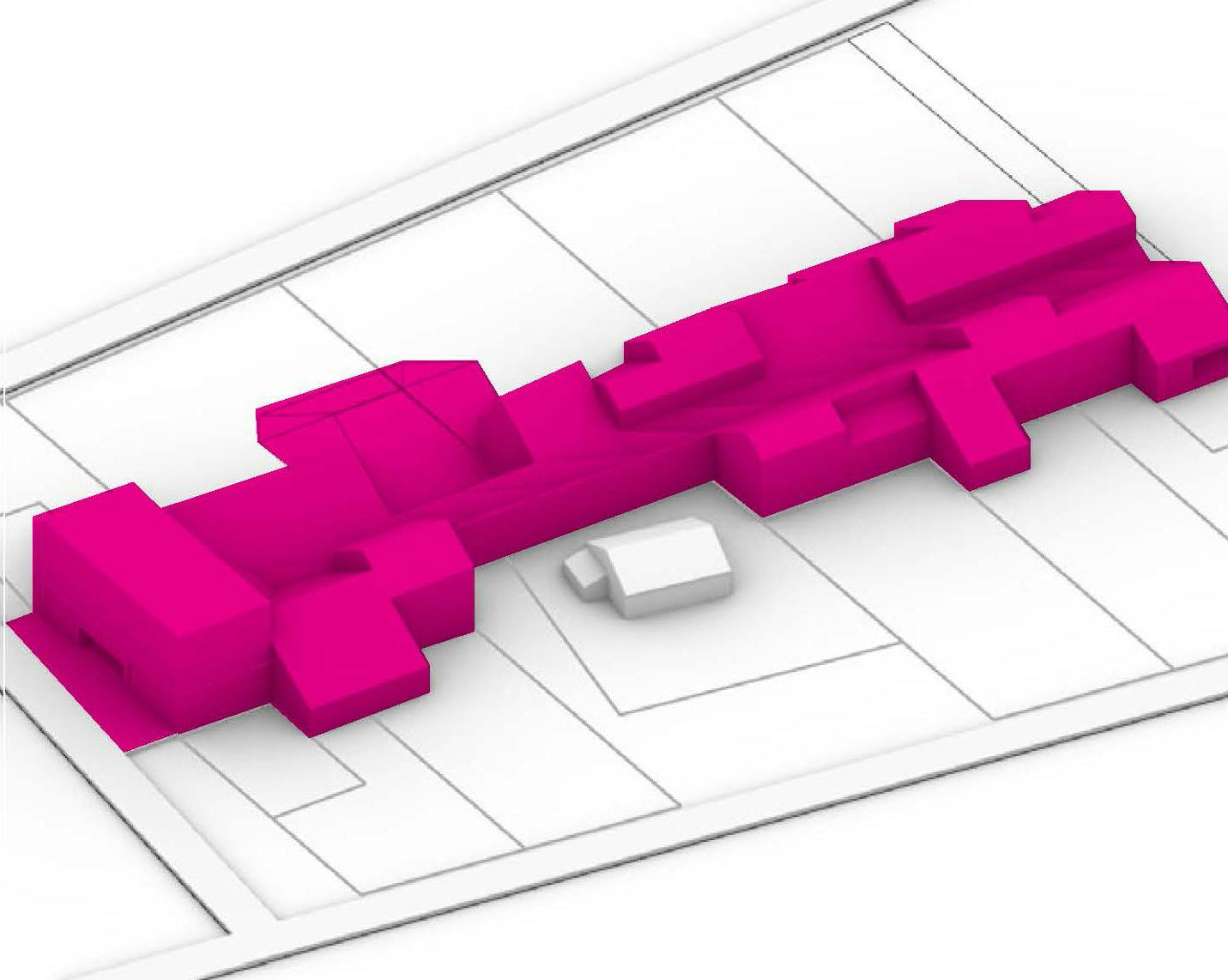
The project offers a specific residential development model for rural localities in Oymyakon area — Timpton. It was created by Russian Research and Design Institute of Urban Development (Lengiprogor Institute) in 2008 for a series of rural localities for the builders of a hydroelectric power chain on the Timpton River in Yakutia. The original model is designed to ensure constant supply of materials in conditions of restricted transport connection.
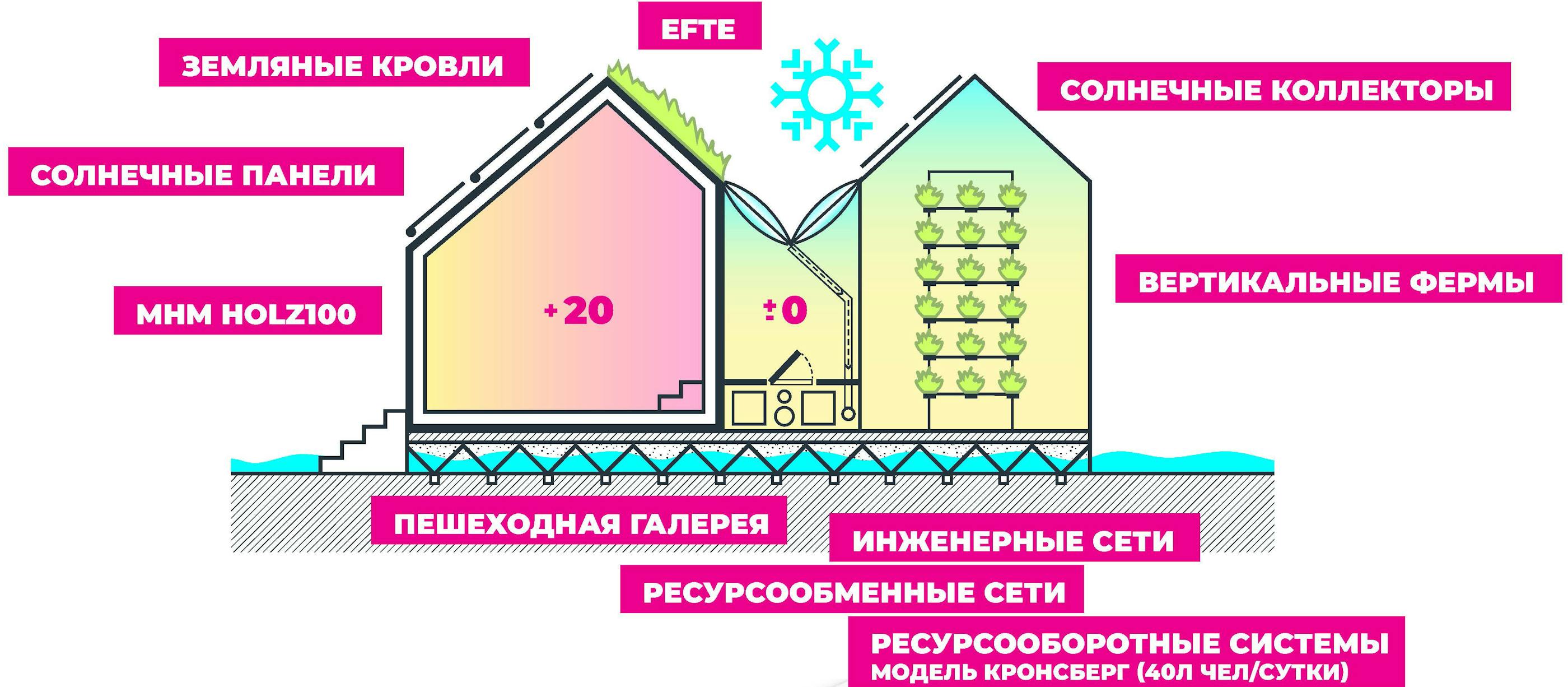
The basis of this model is a pedestrian gallery across the center of the quarter. Its thermally-insulated profile of engineering supply of households is protected from critically cold temperatures of the permafrost zone. The profile is placed under the pedestrian area. The constructions are covered by a light transmissive ethylene tetrafluoroethylene (ETFE) film on a carcass made of glued wood. Gable facades of galleries have wind-stopping lobbies which serve as winter entrances, portals which serve as summer entrances and allow for large-sized supply to be moved, and access ramps connecting a pedestrian gallery with the street. All parts of the quarter’s household zone are adjacent to the gallery, which minimizes the cost of supply.
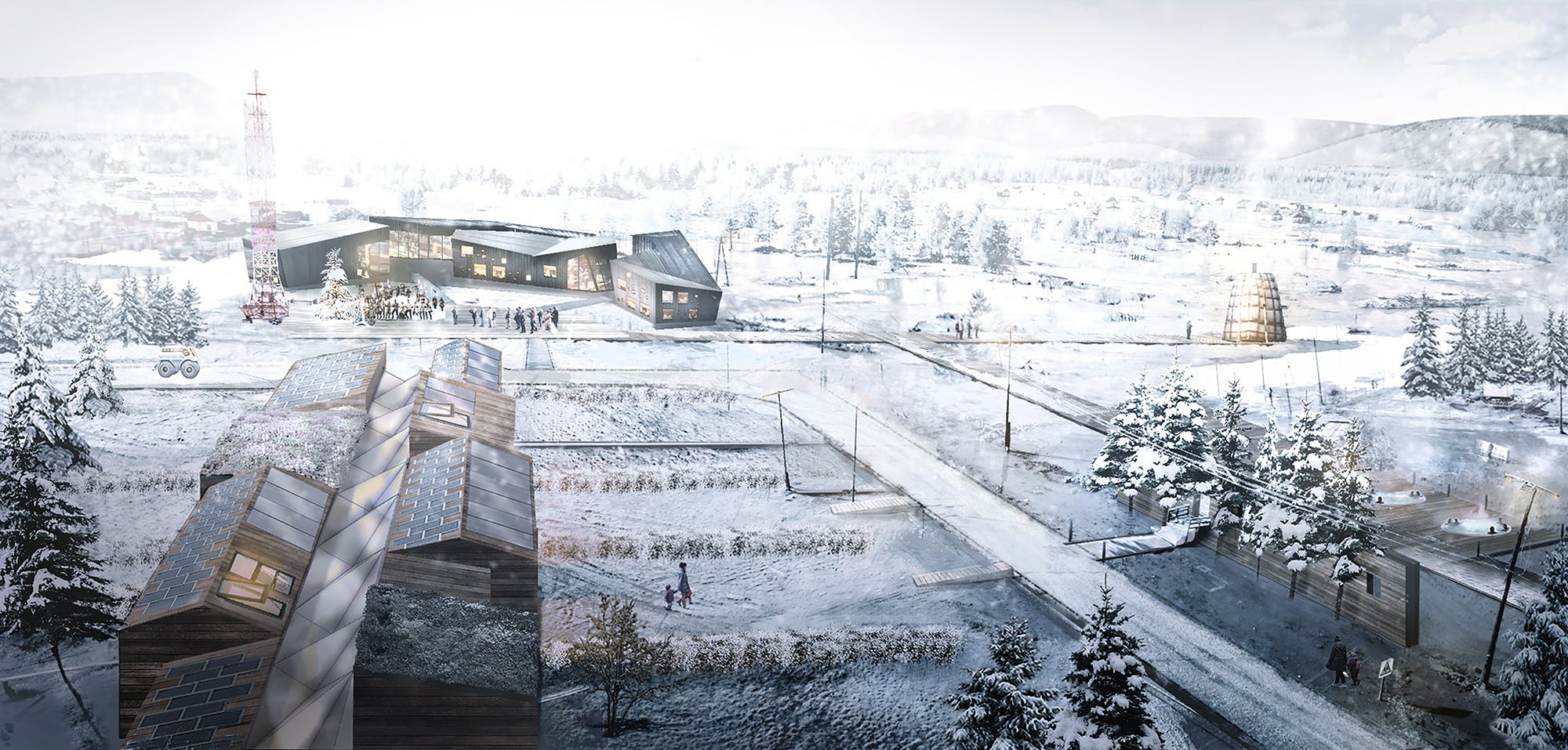
As this model is drastically different from other conventional household forms in the region, and the reasons for switching to this model are purely rational and cost-related, it is recommended that the first developments to be built as demonstrational for the locals. They can also be used as accommodation for guests and researchers. Decision on the schedule for further construction can be made on the basis of the purchasing dynamics.
OYMYAKON RURAL LOCALITY
Oymyakon rural locality is a unique space in Oymyakon area. It illustrates key design approaches, and testing innovative technological solutions following the target-oriented scenario leads to a complete switch to carbon-free infrastructure: an airship hangar in the center of the rural locality, a research residency complex on the territory of an education institution, demonstrational residential complexes — Timptons.
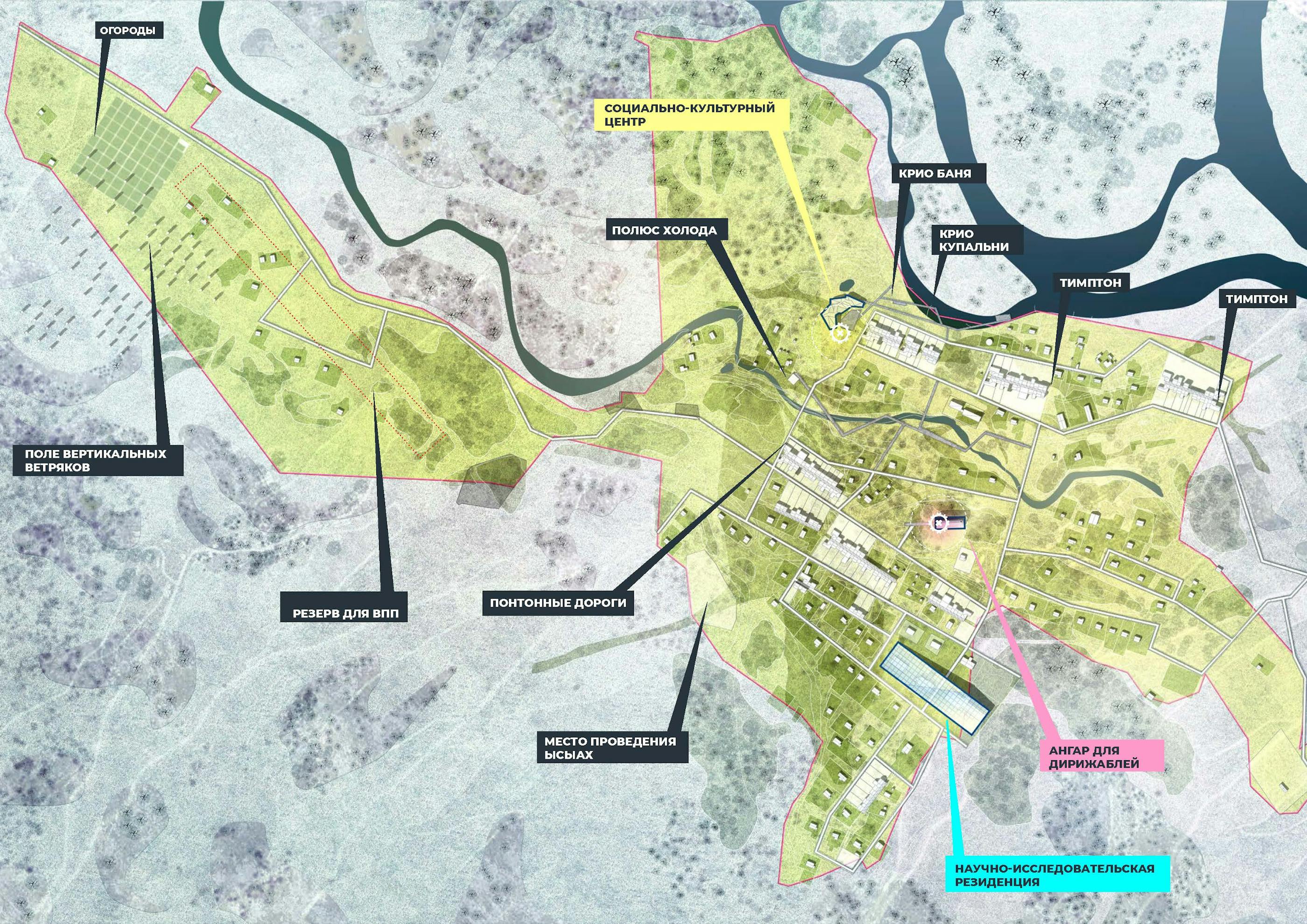
To limit the number of places available to mass tourists and to avoid excessive anthropological load, there is a social and cultural center, which is, at the same time, an administration and a tourist center. Nearby, on the embankment of the Indigirka River, there is a cryobath and a cryopool. To ensure accessibility on the territory of the locality, the flooded zones are equipped with pontoon roads and lifted pedestrian footpaths.

OYMYAKON : : modernity pole
The project Modernity Pole offers strategic development plan for Oymyakon area. We believe that sustainability can truly be reached when working with this scale. Once the quality of landscape and environment improves, supply mechanisms for households and localities improve, expenses decrease, and economics of the region obtains new perspective without having to drastically change the habitual way of living.
